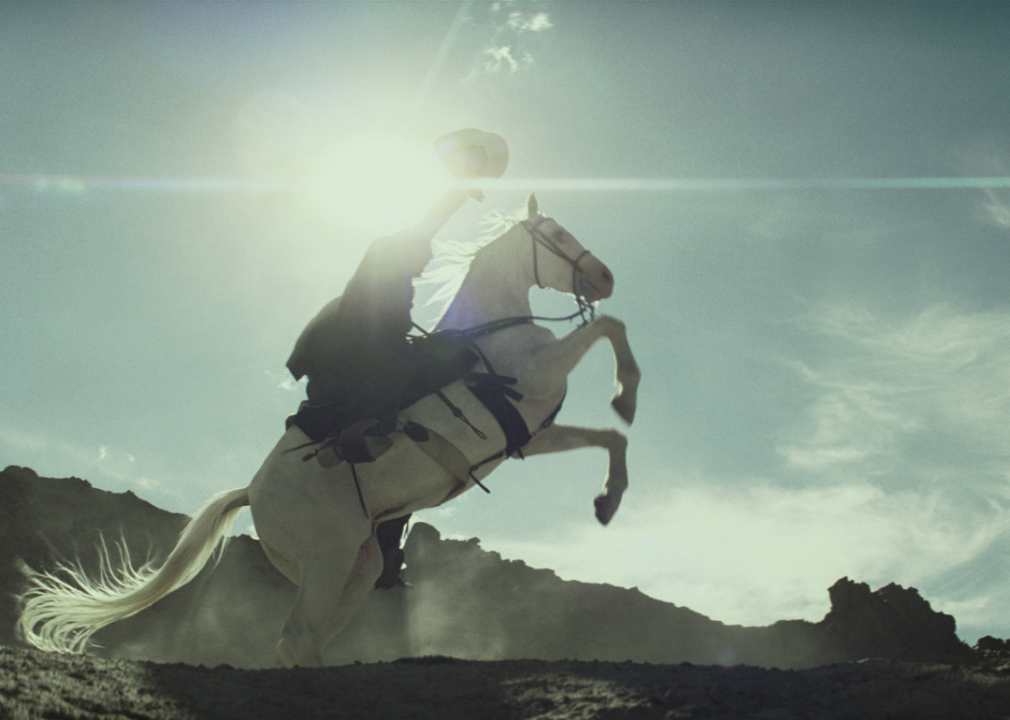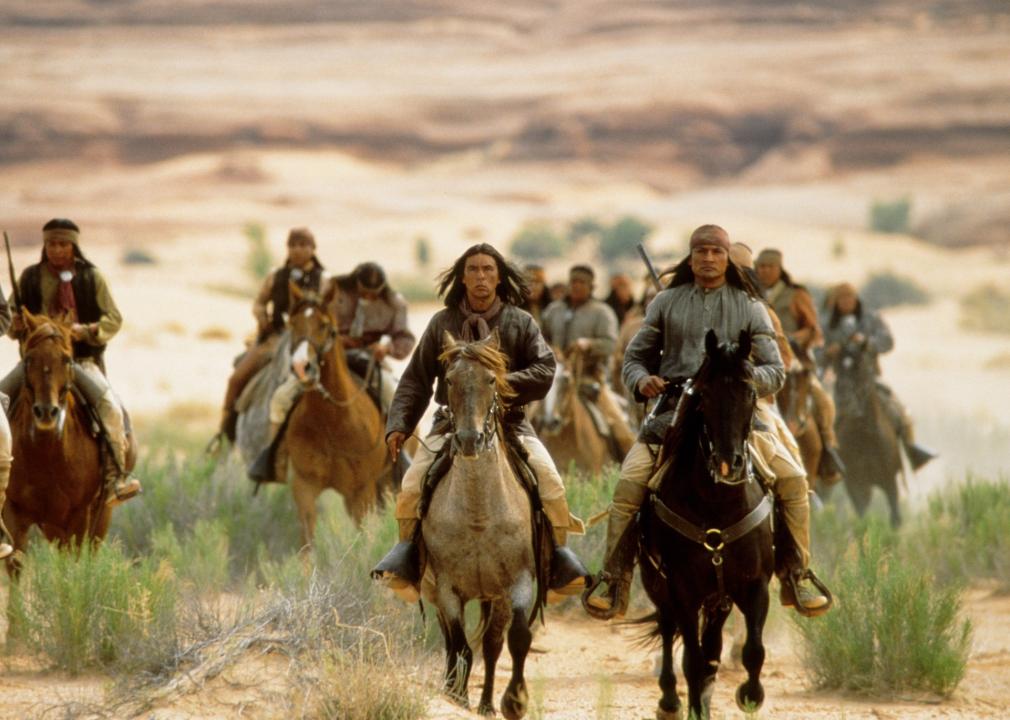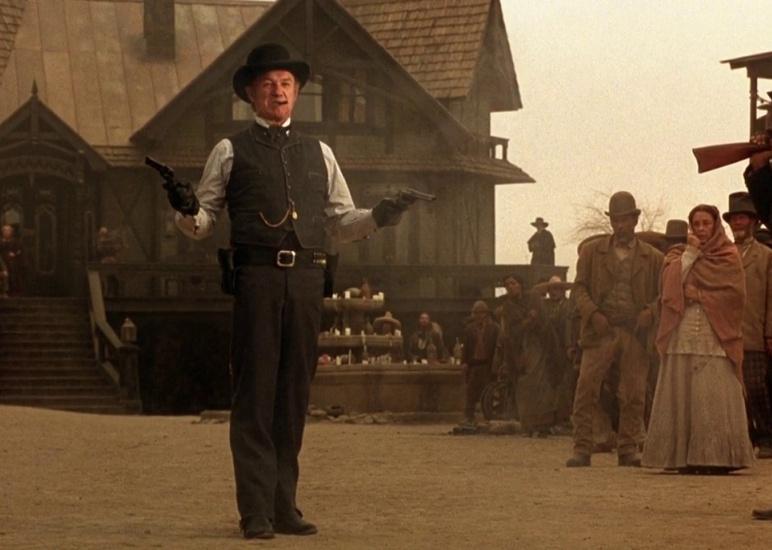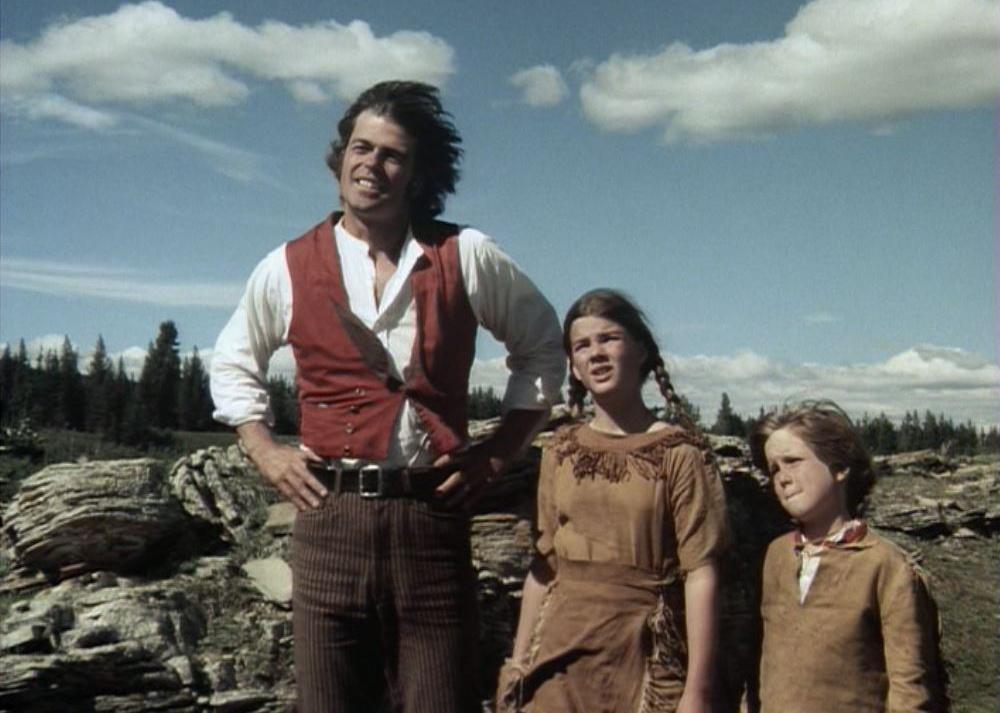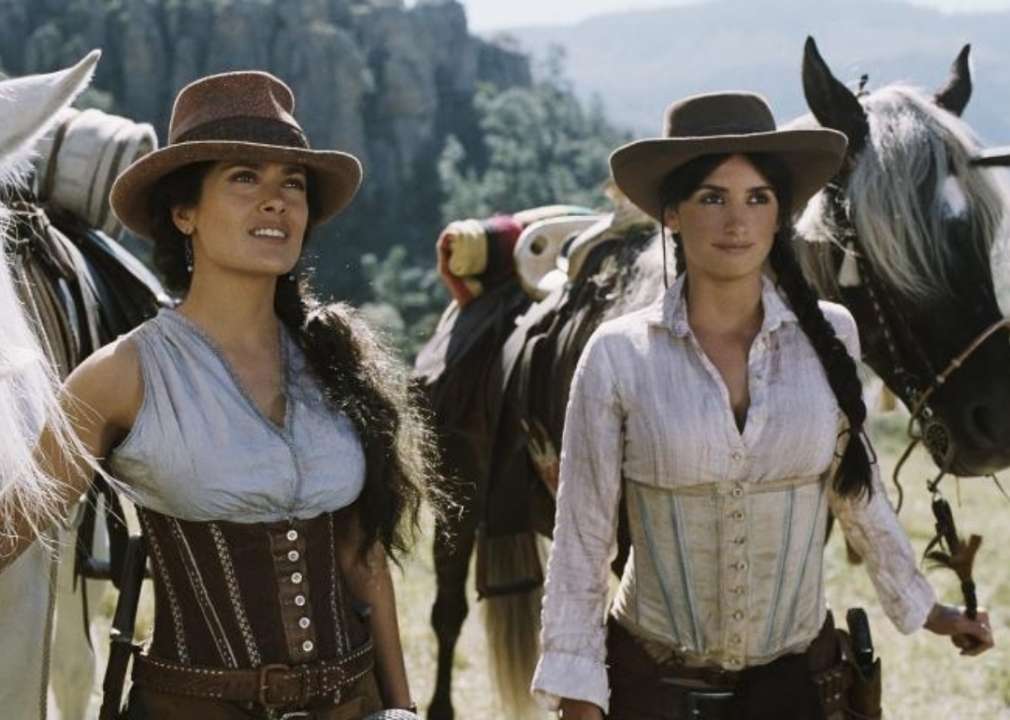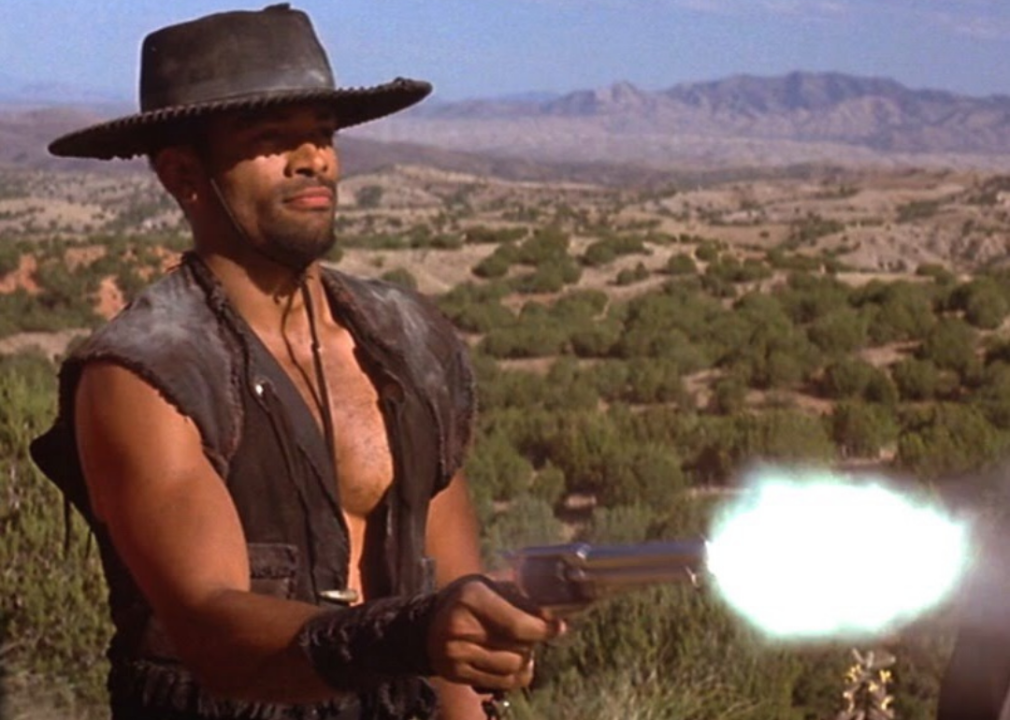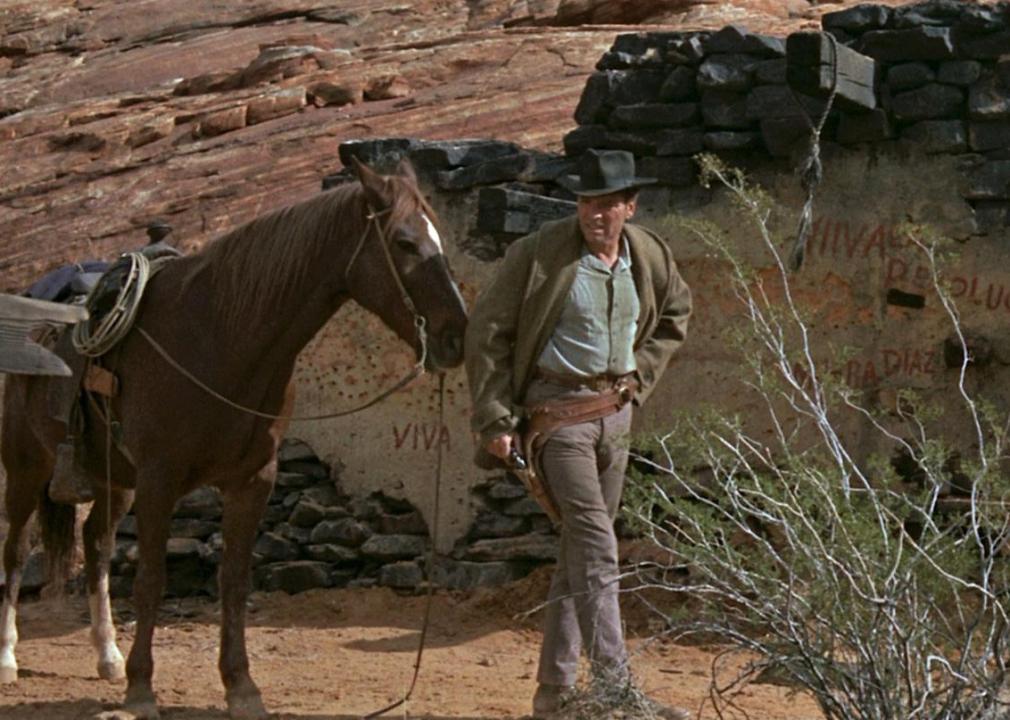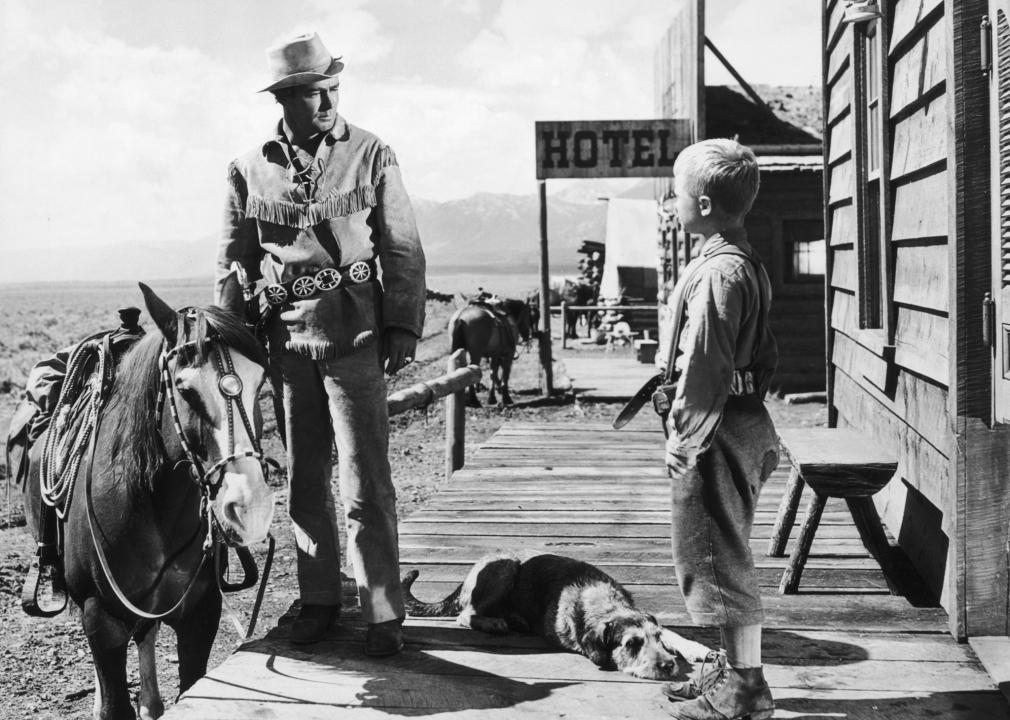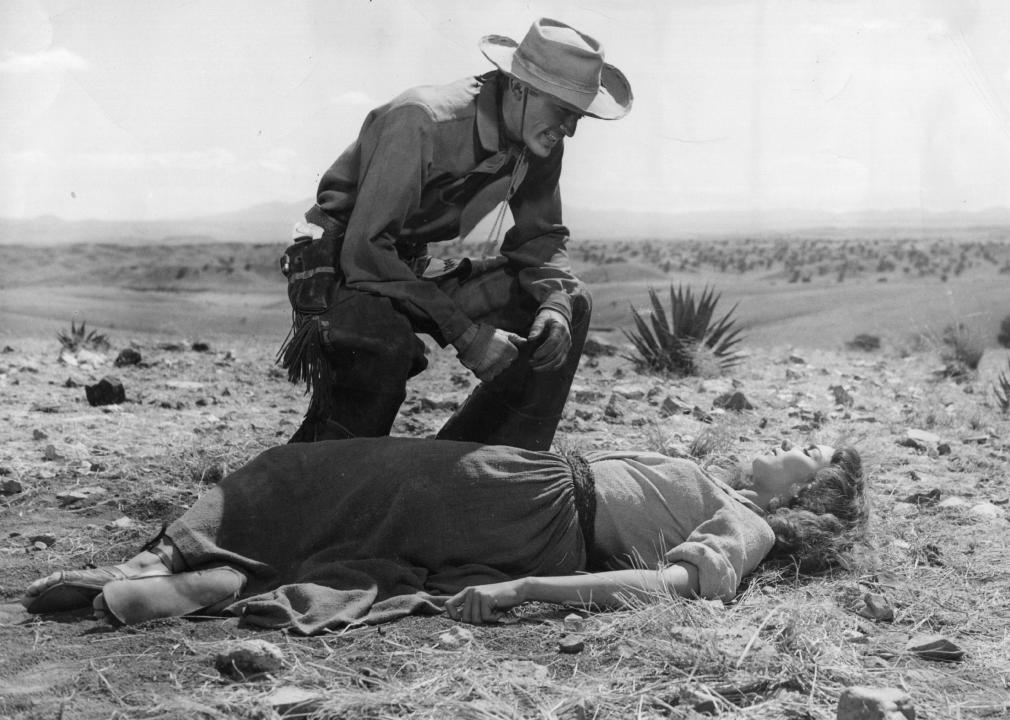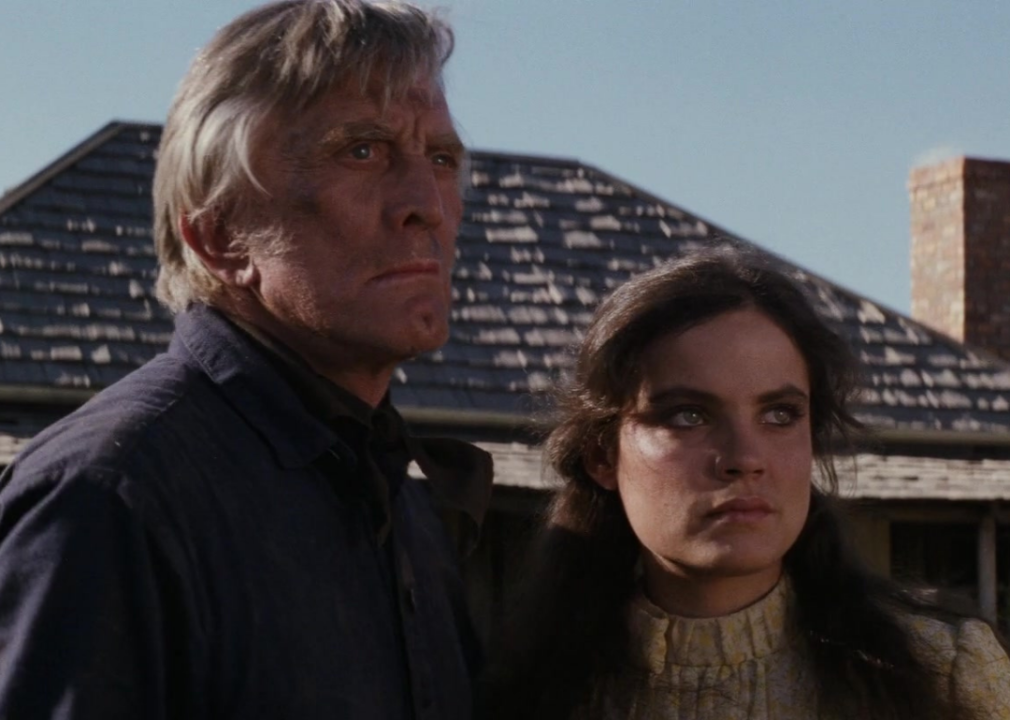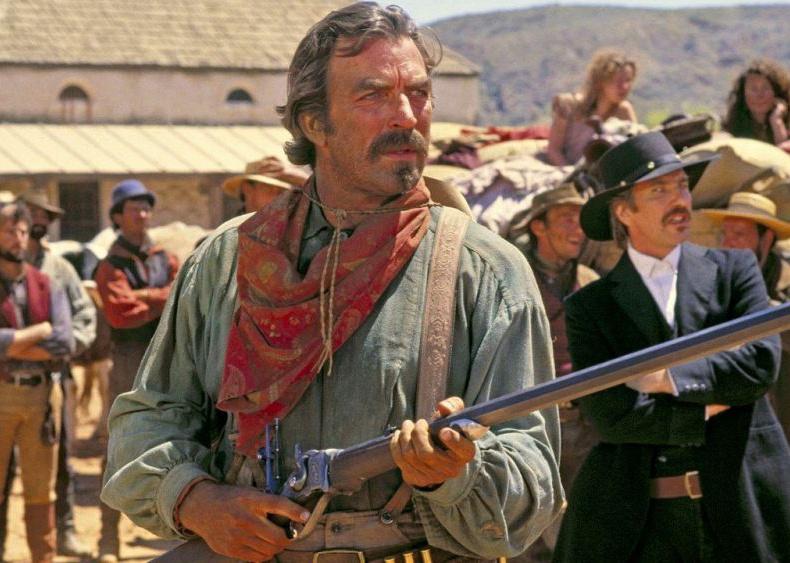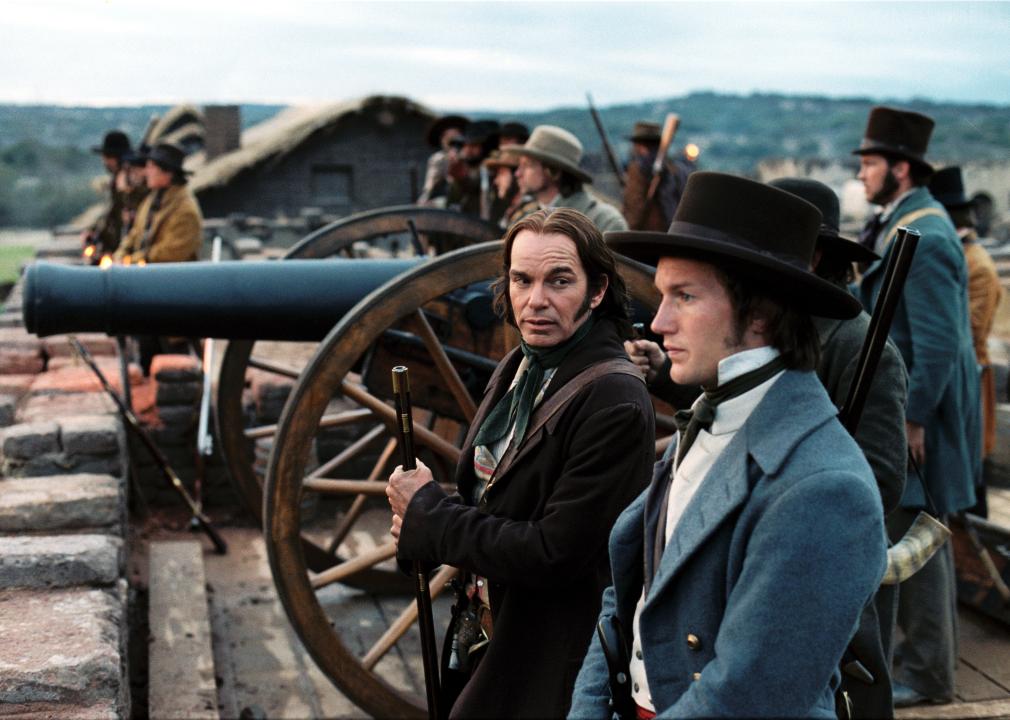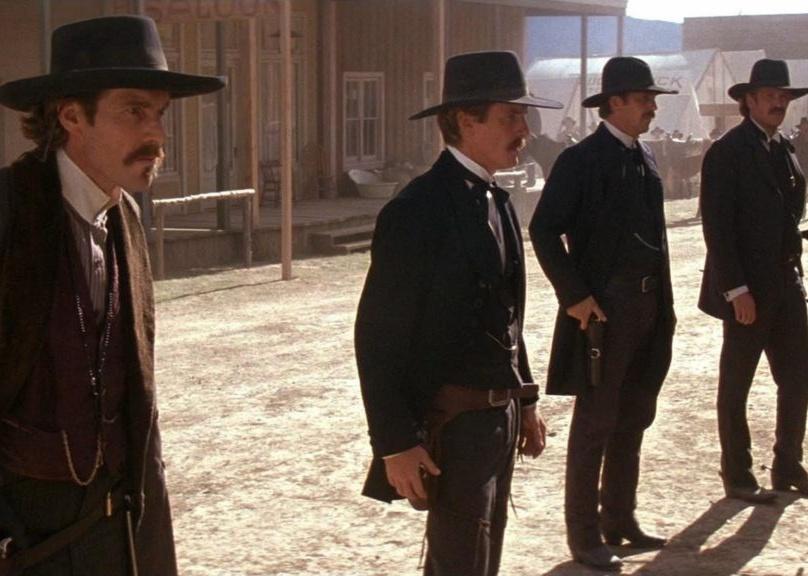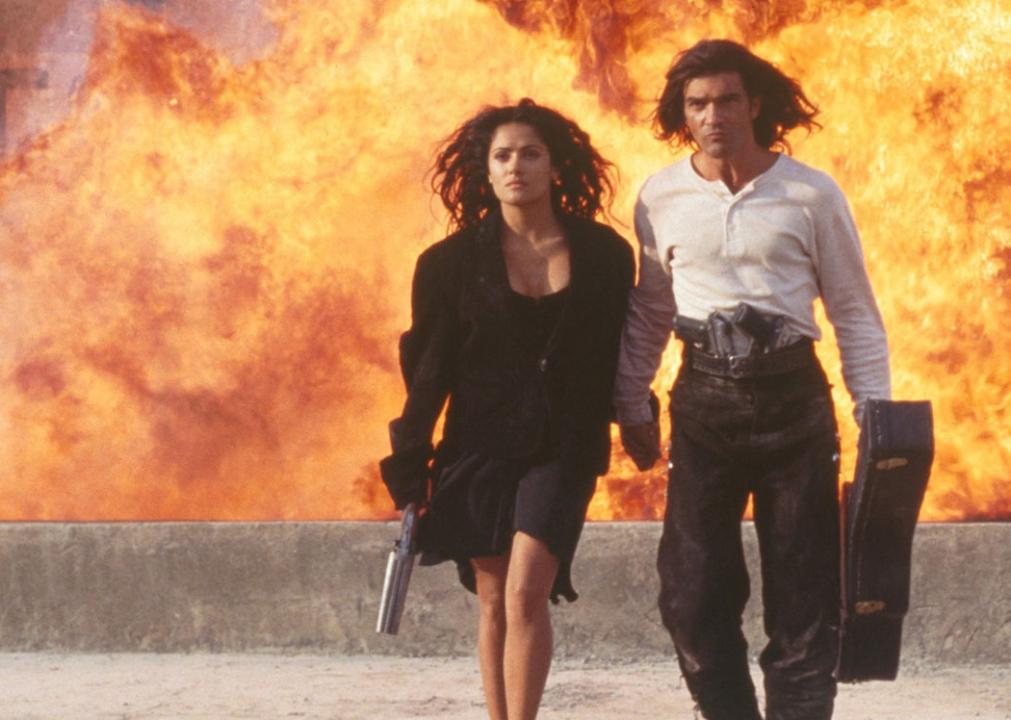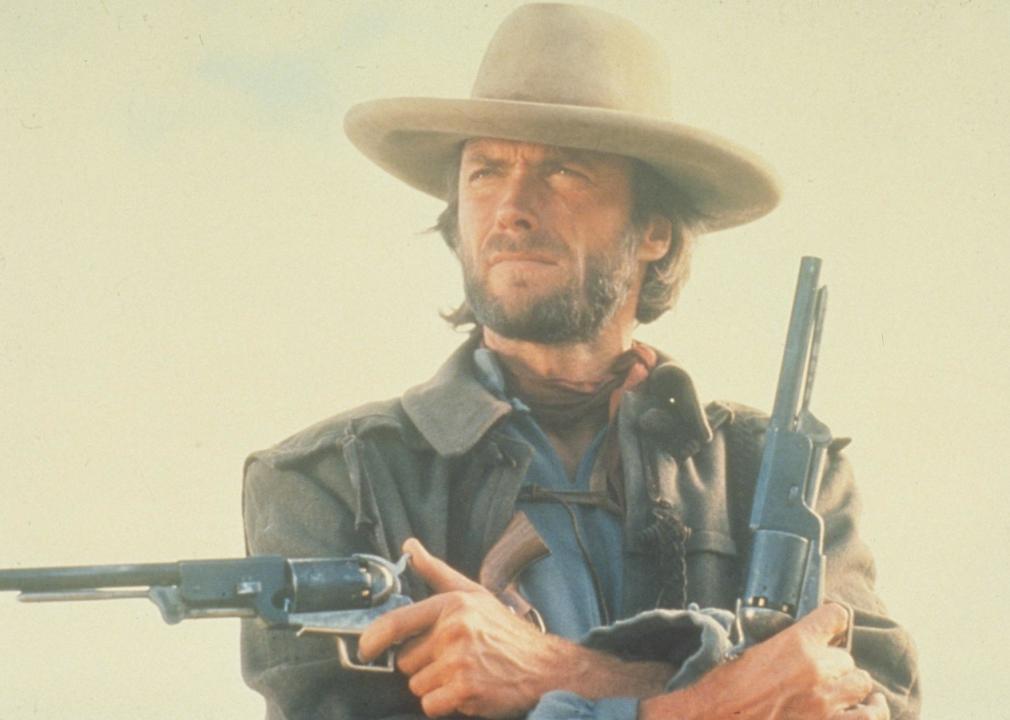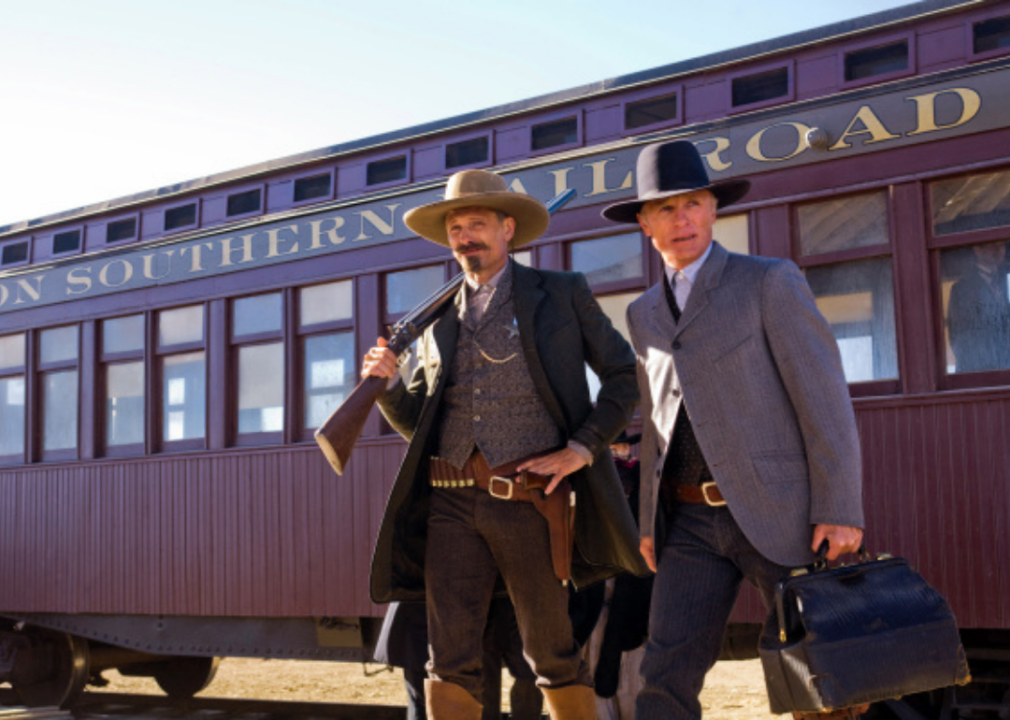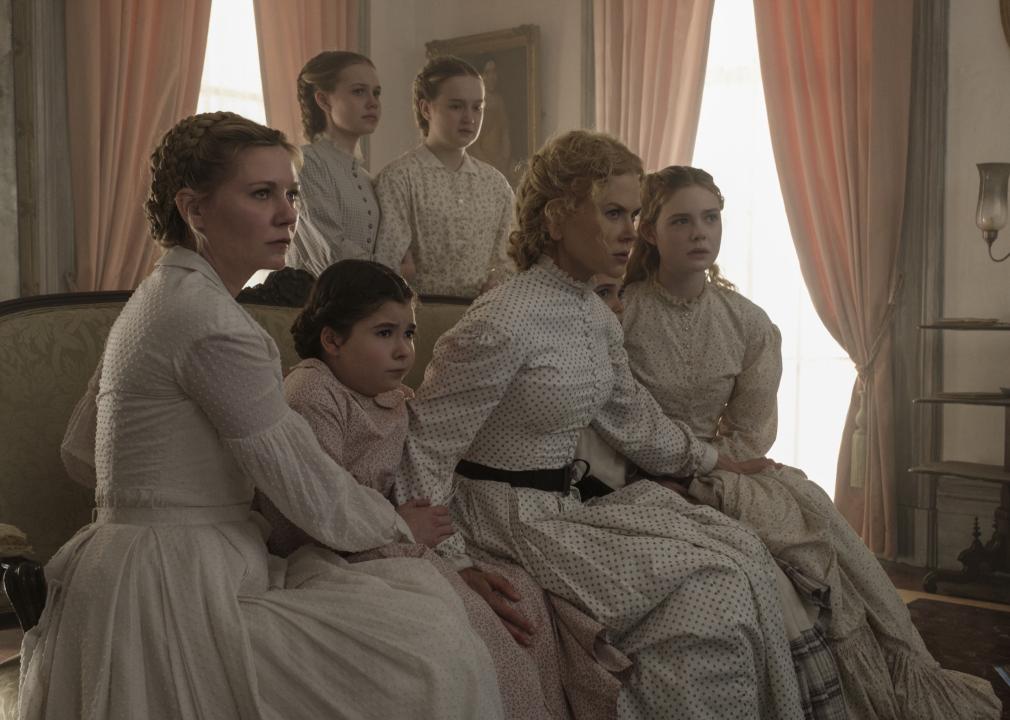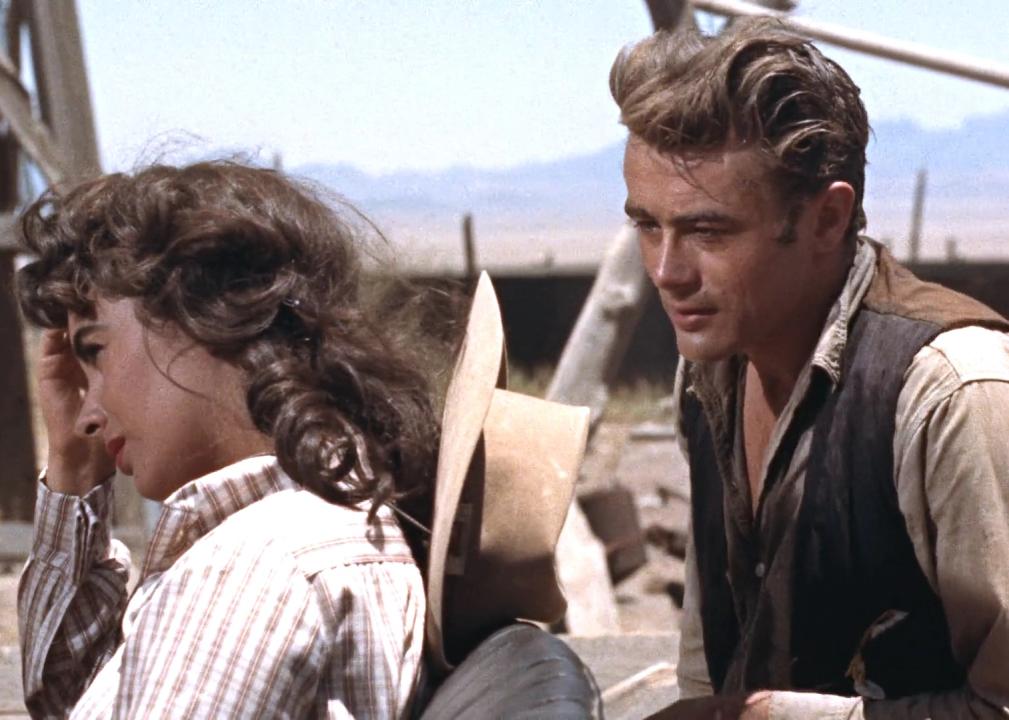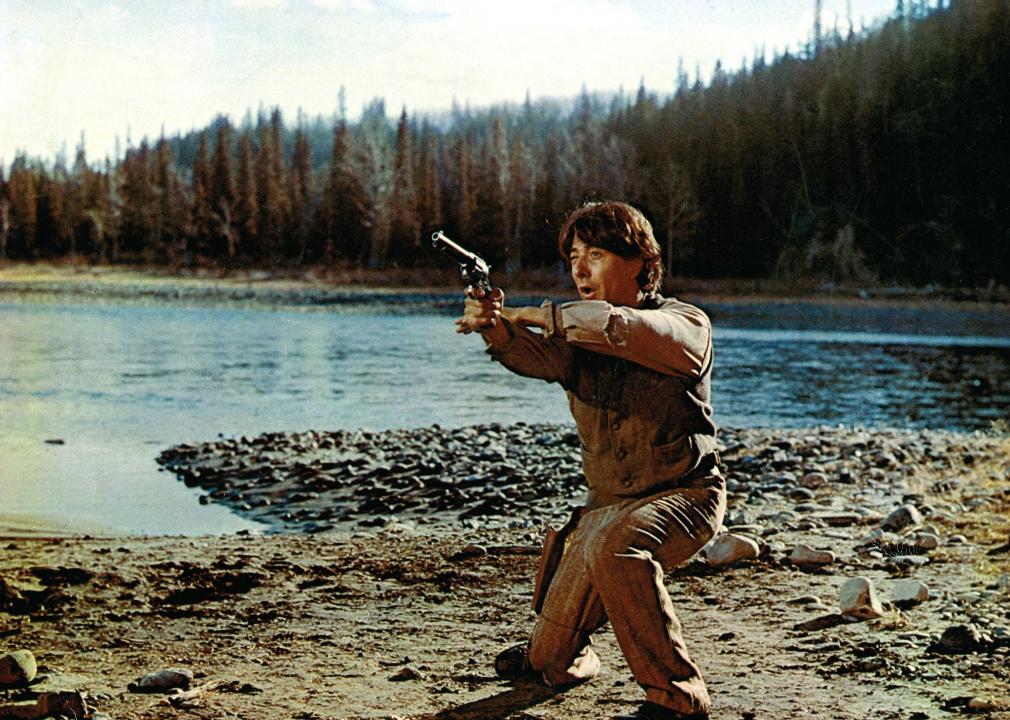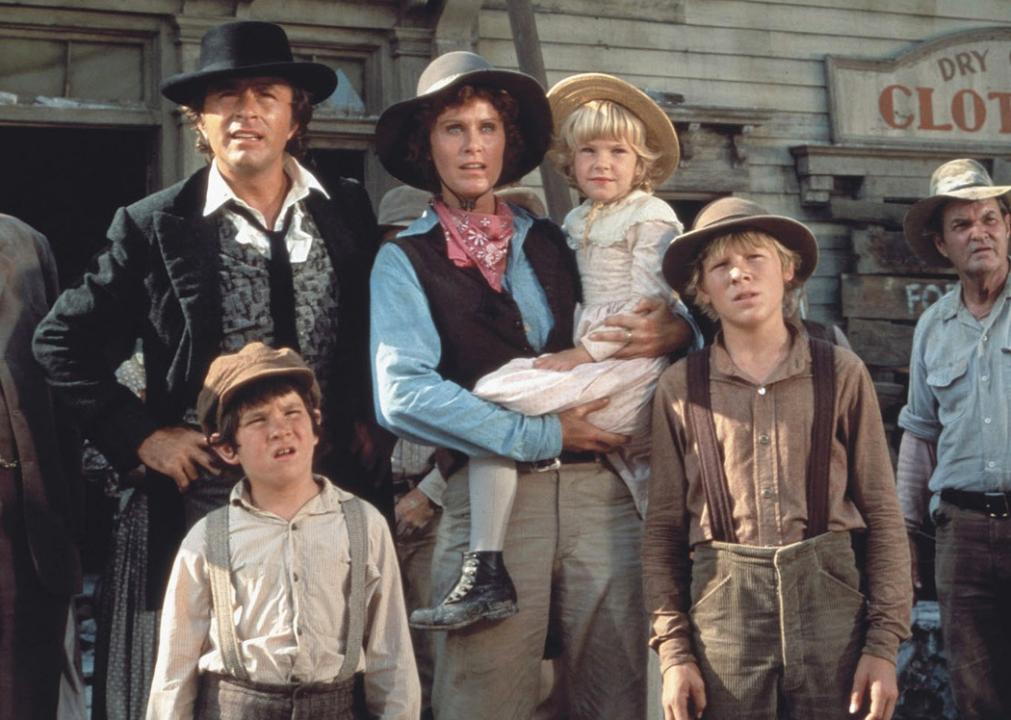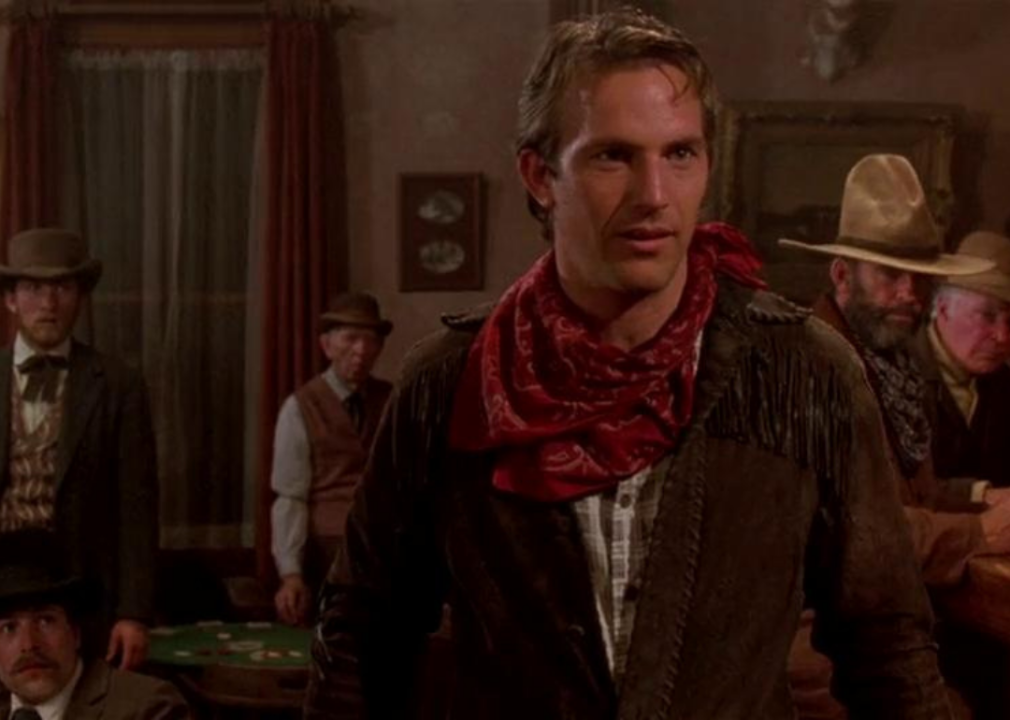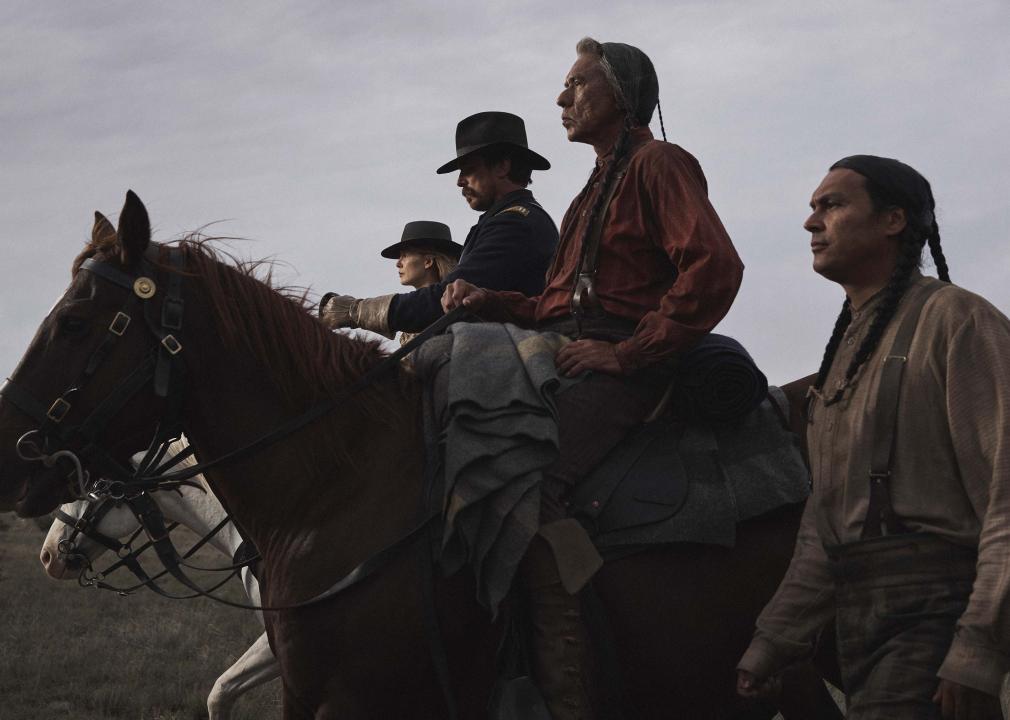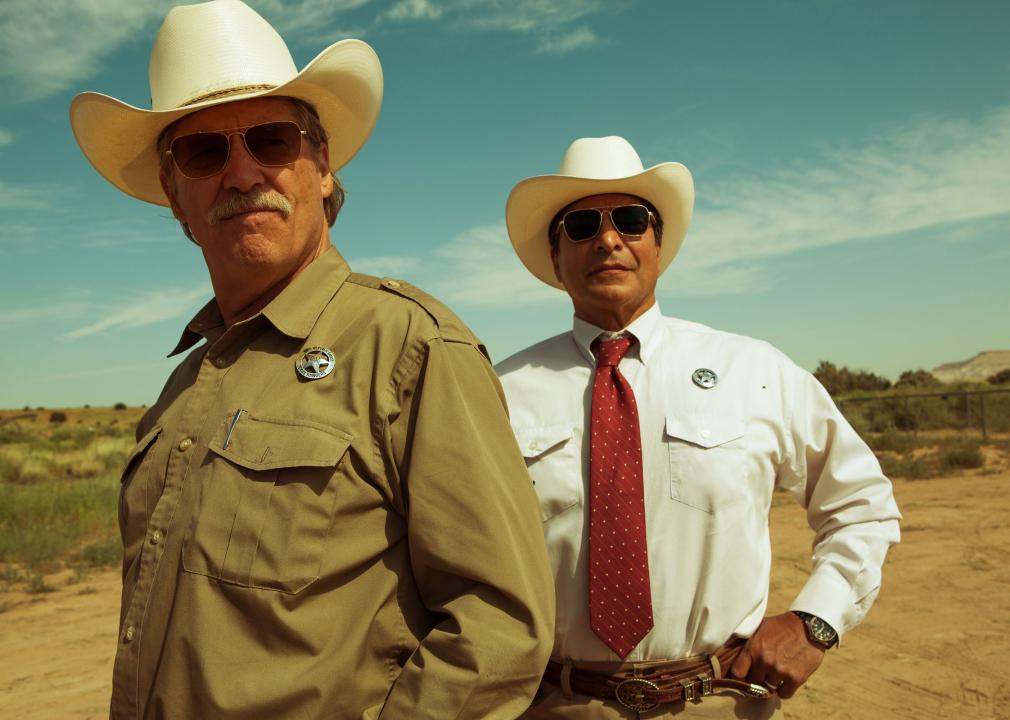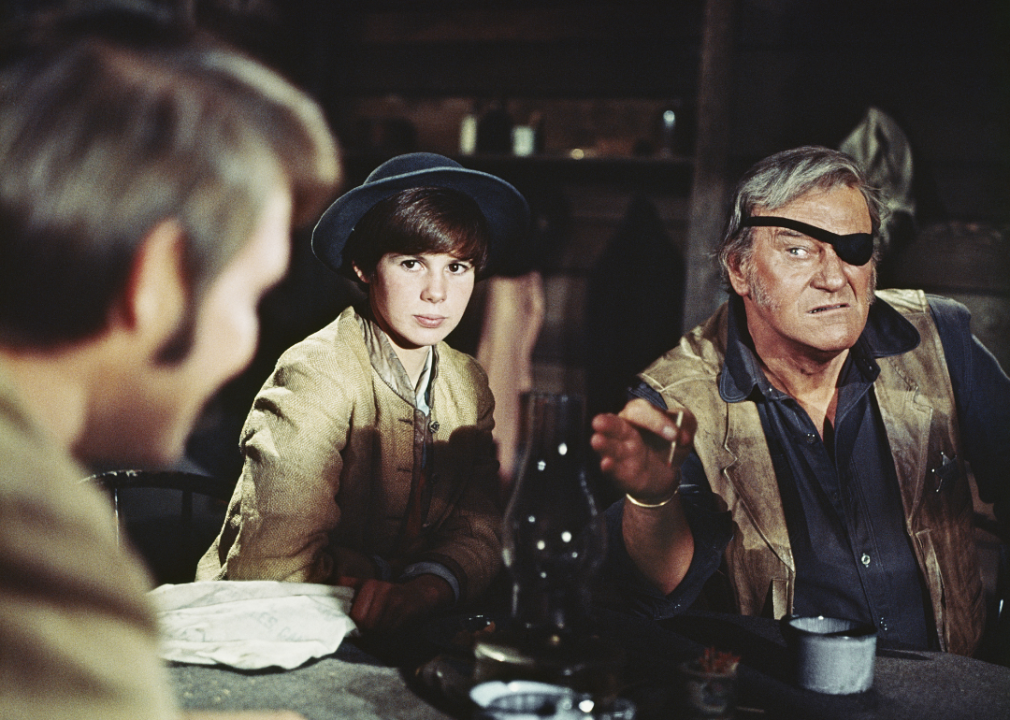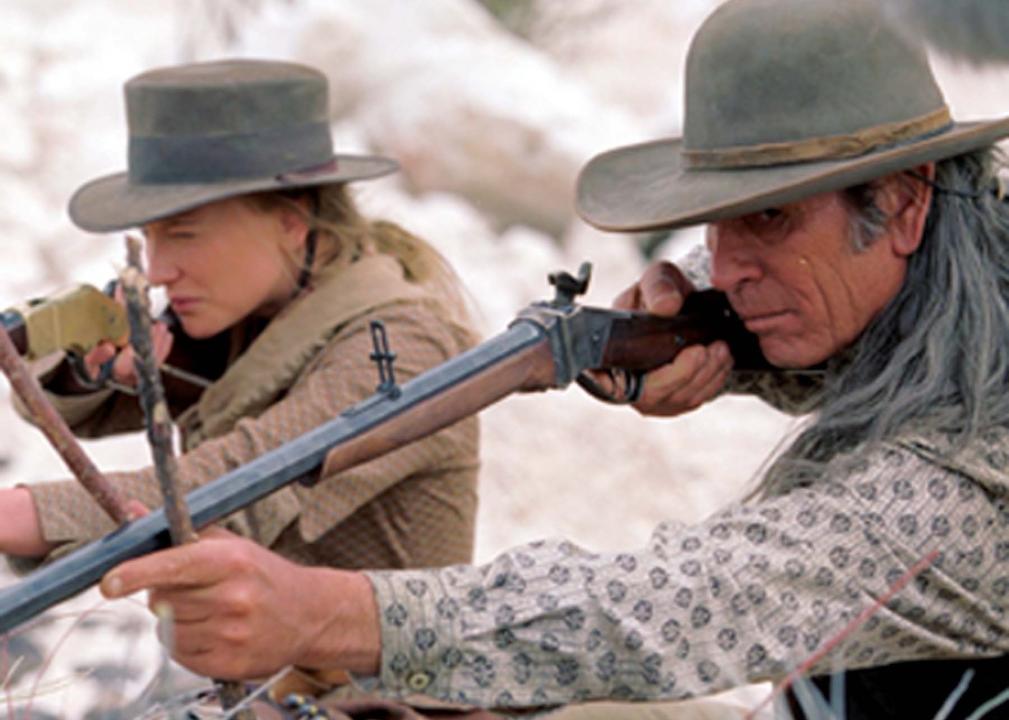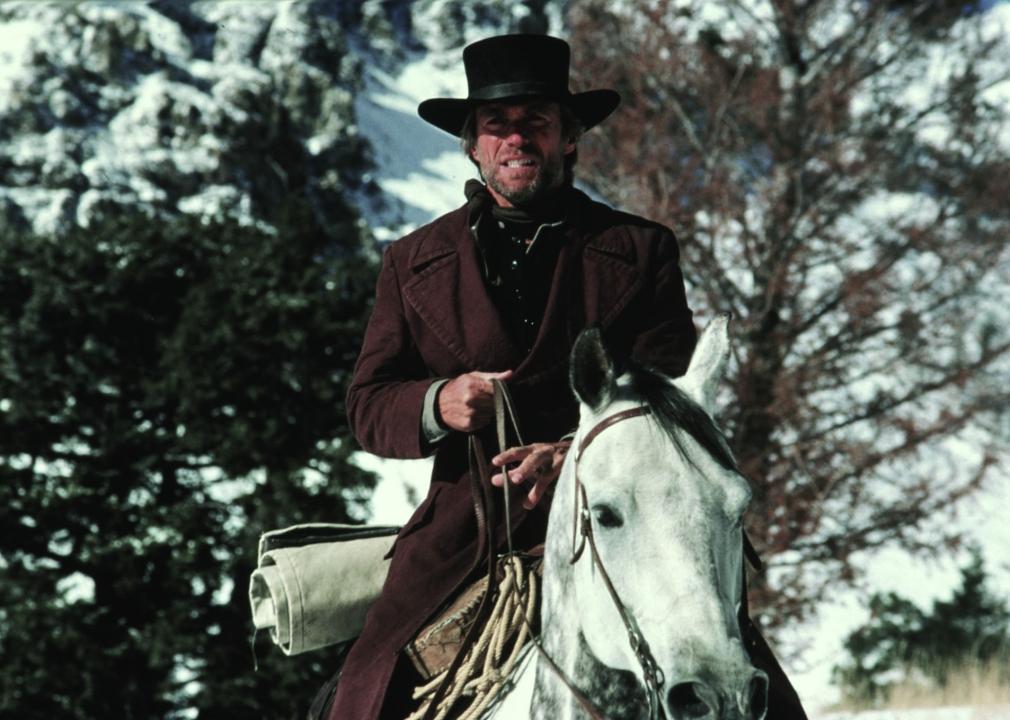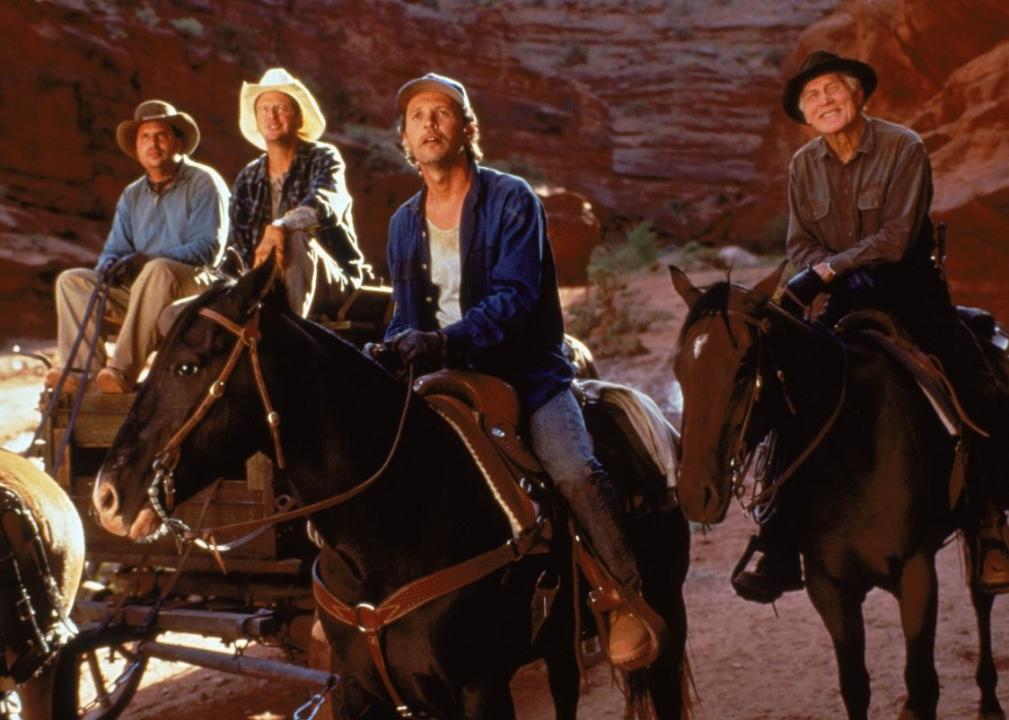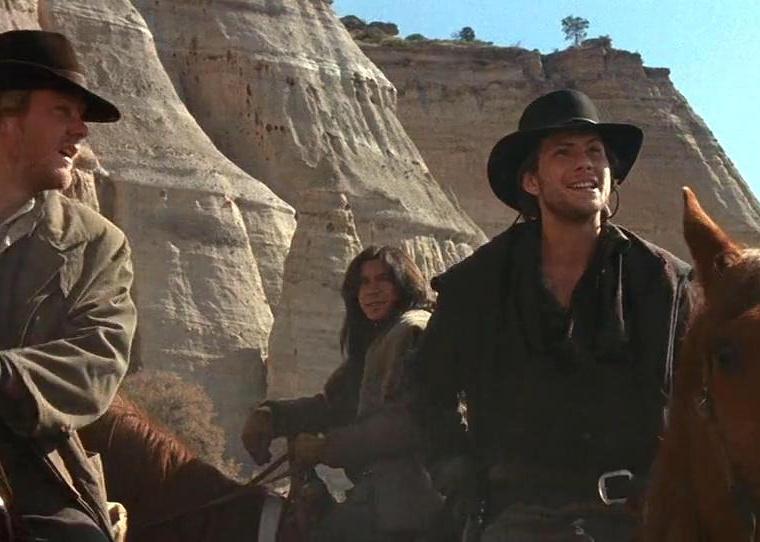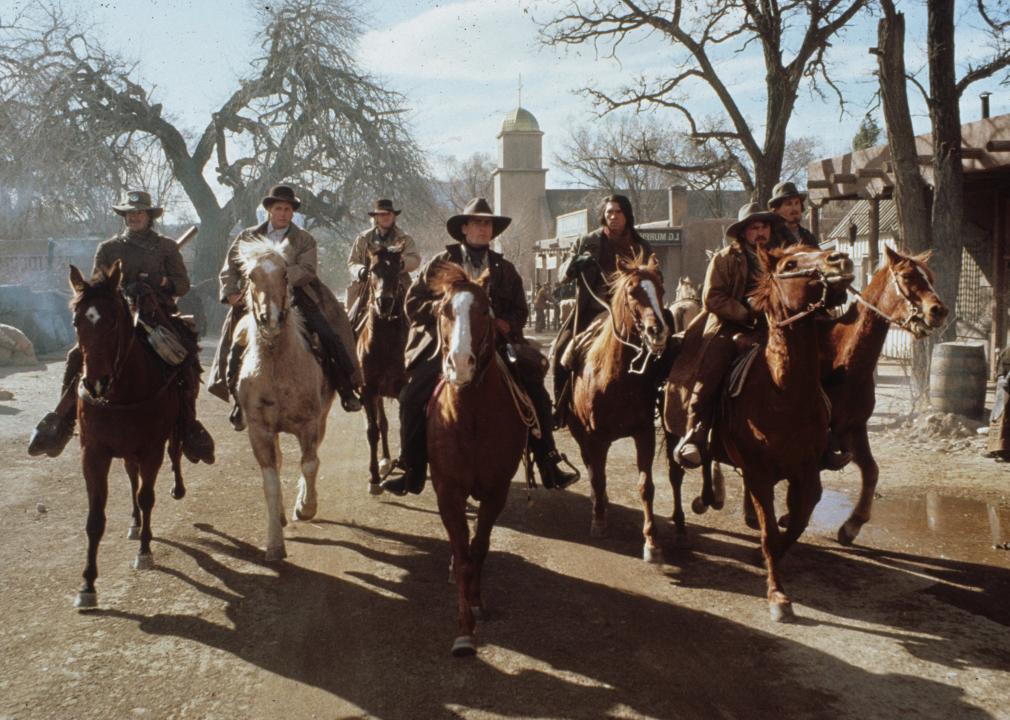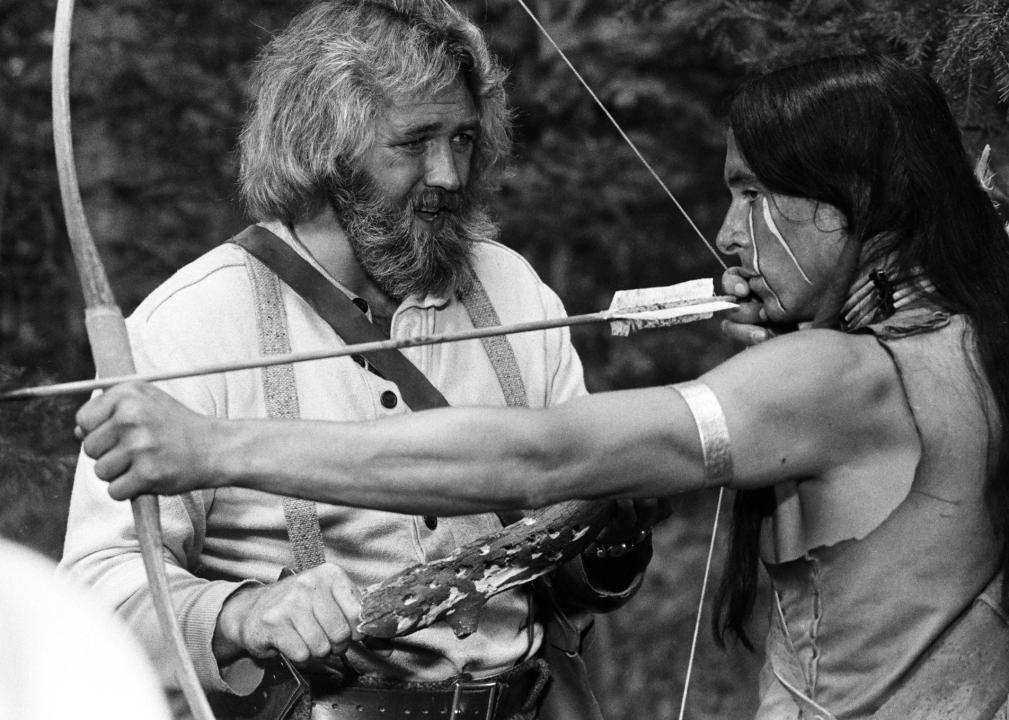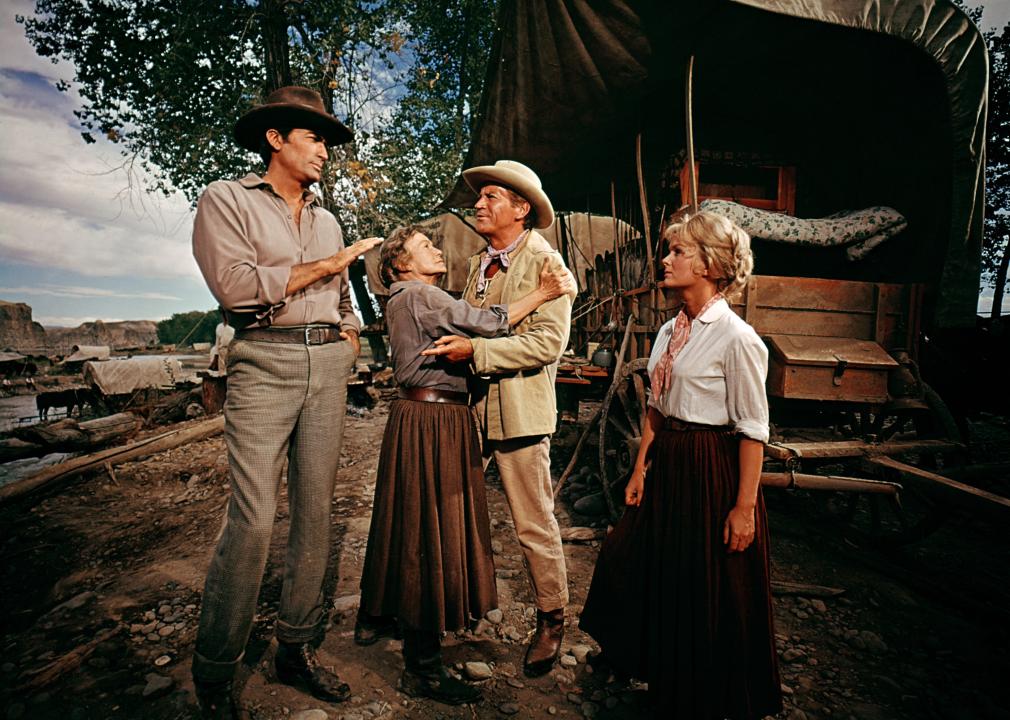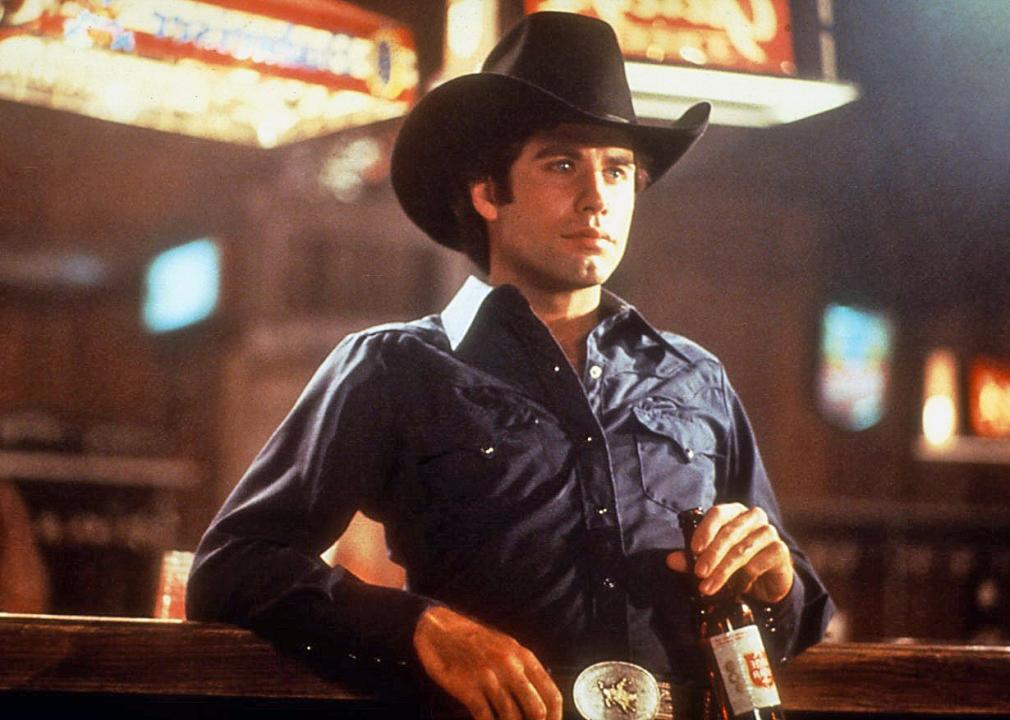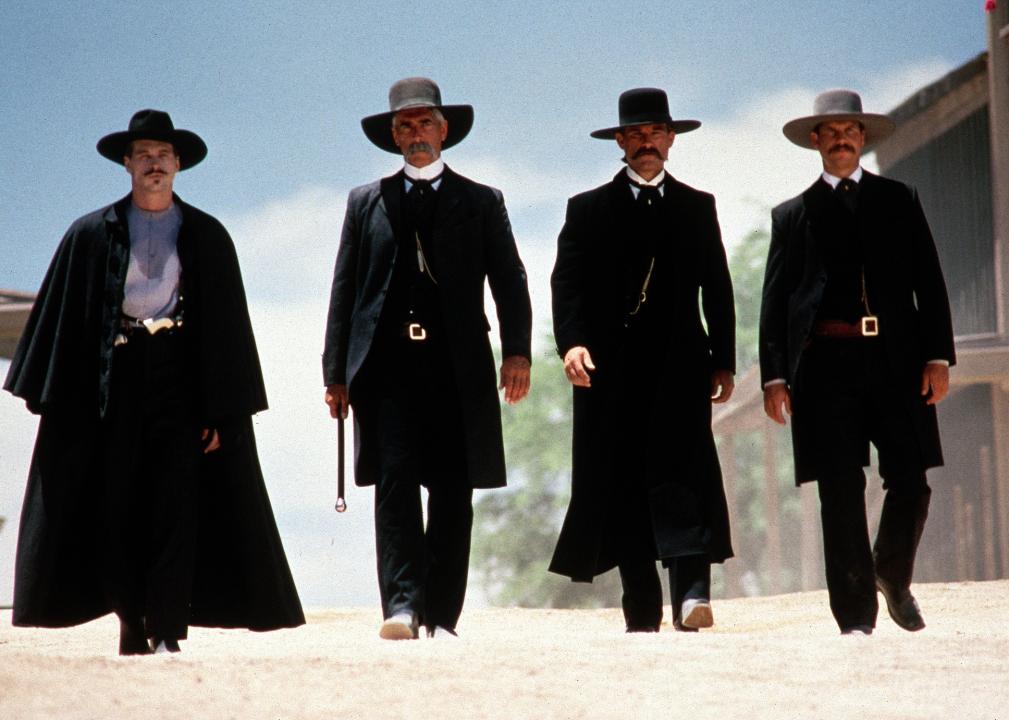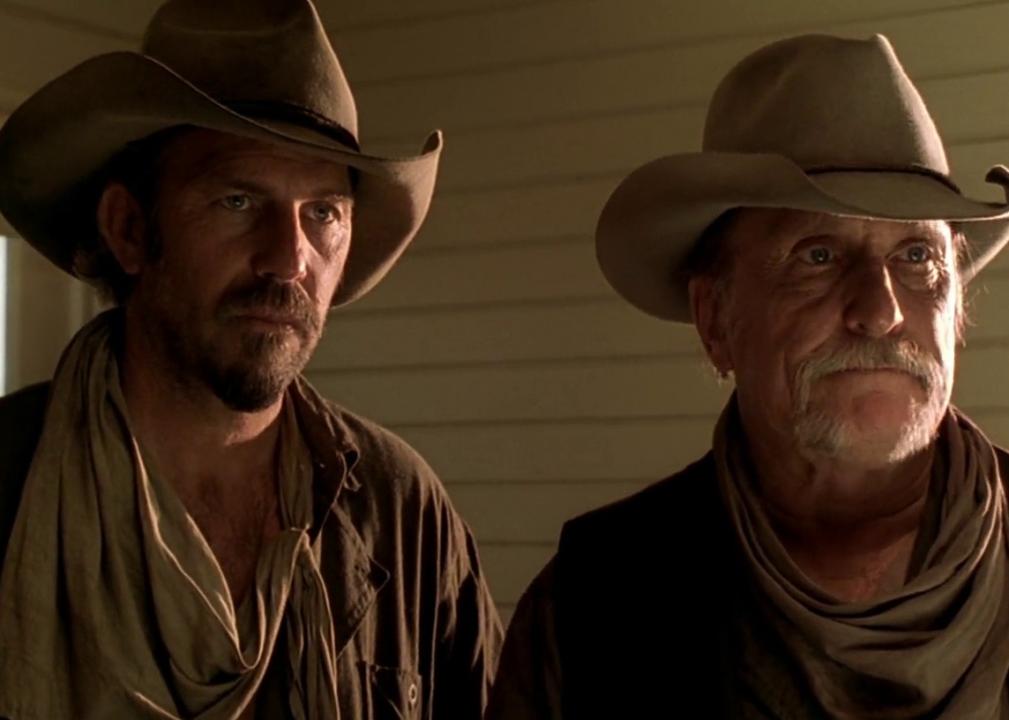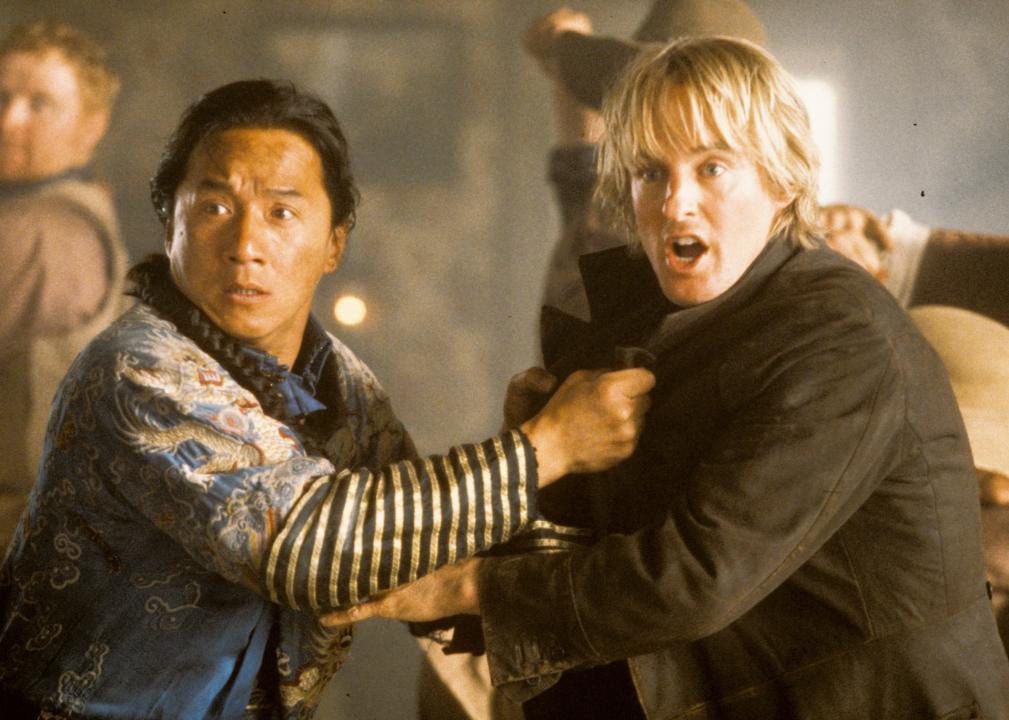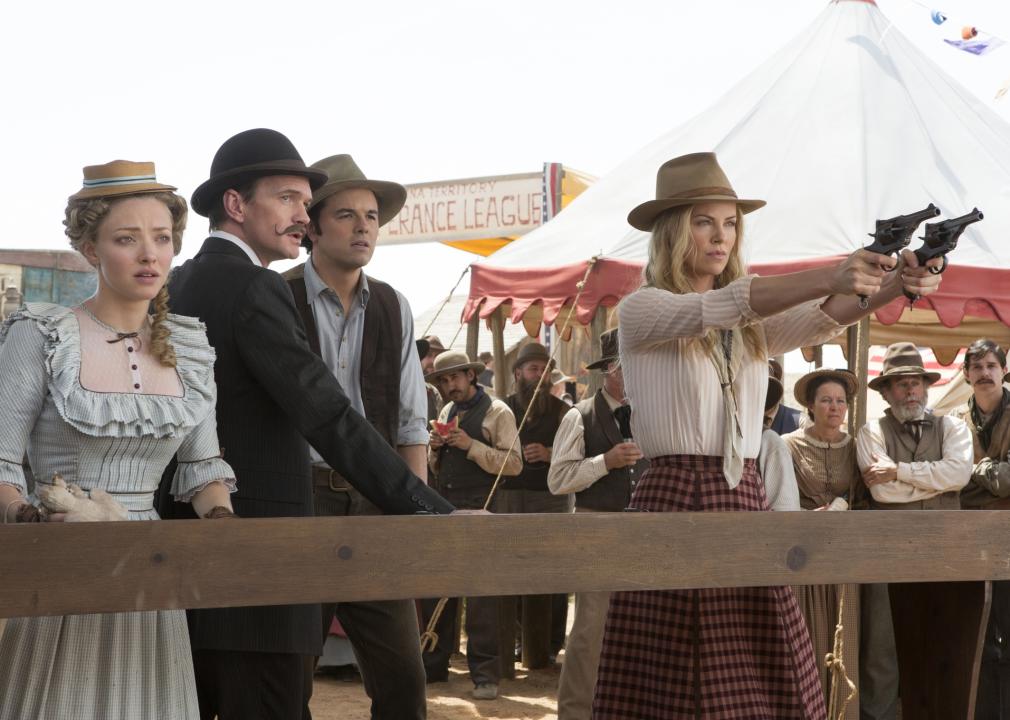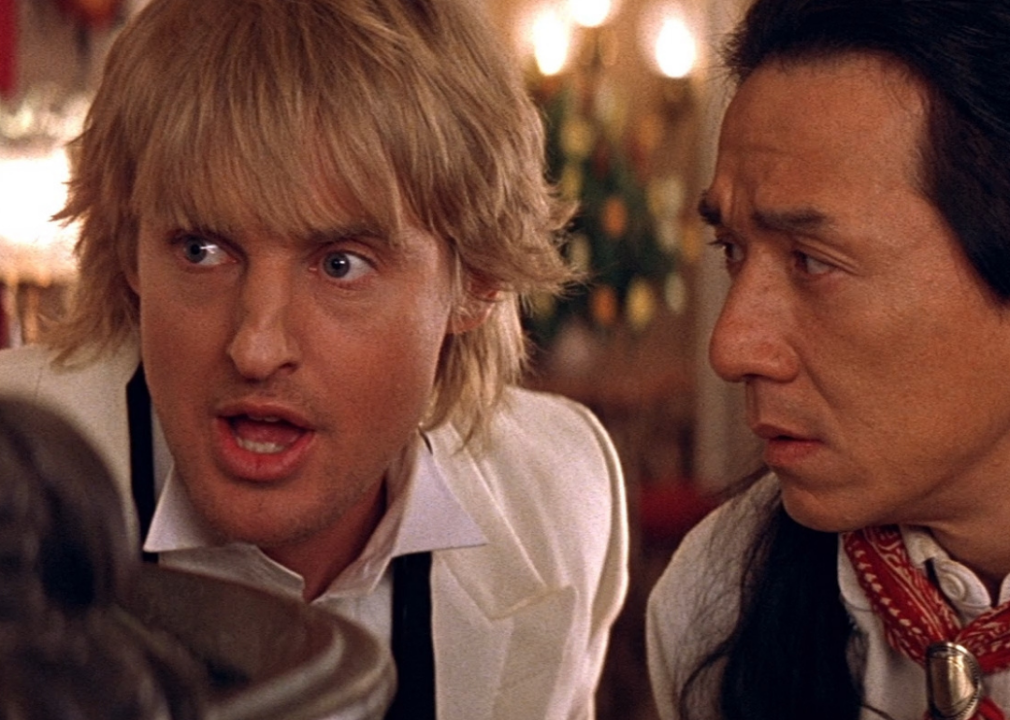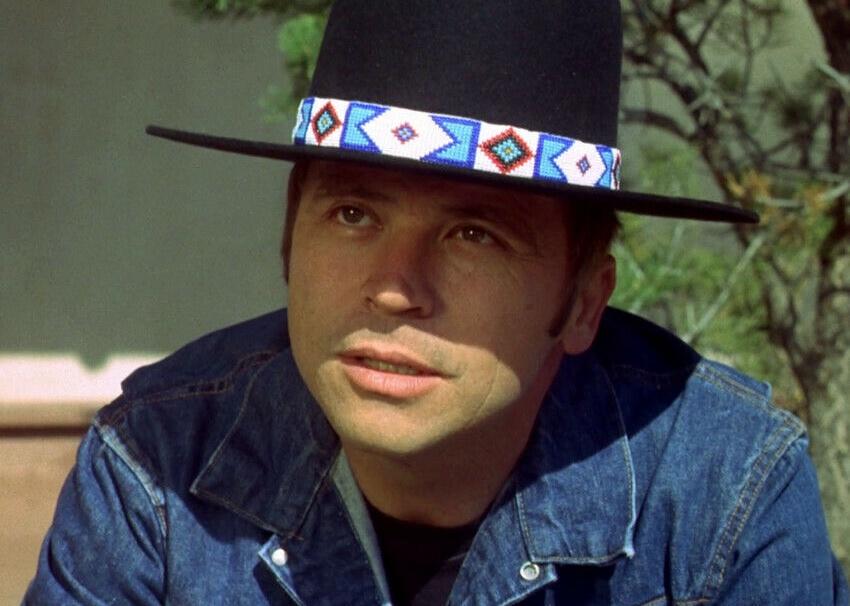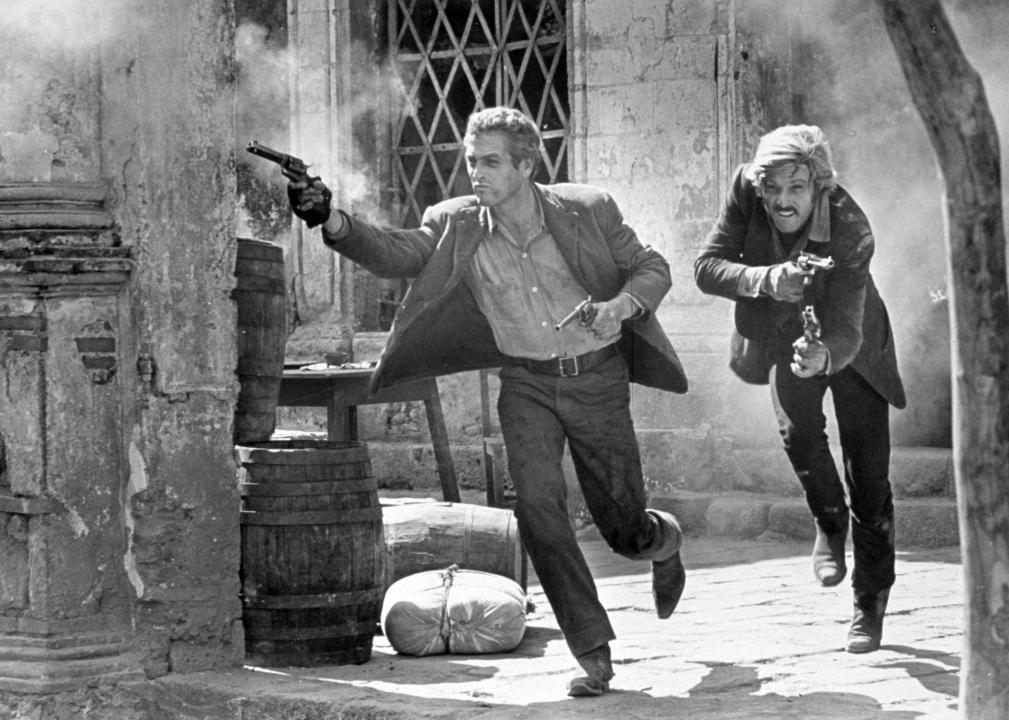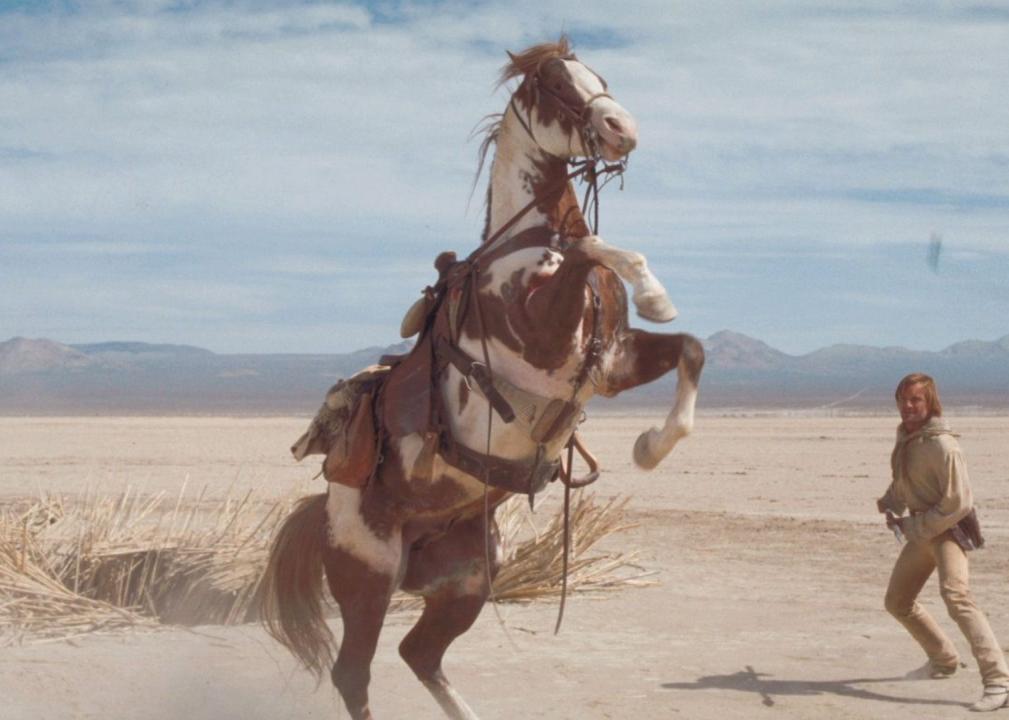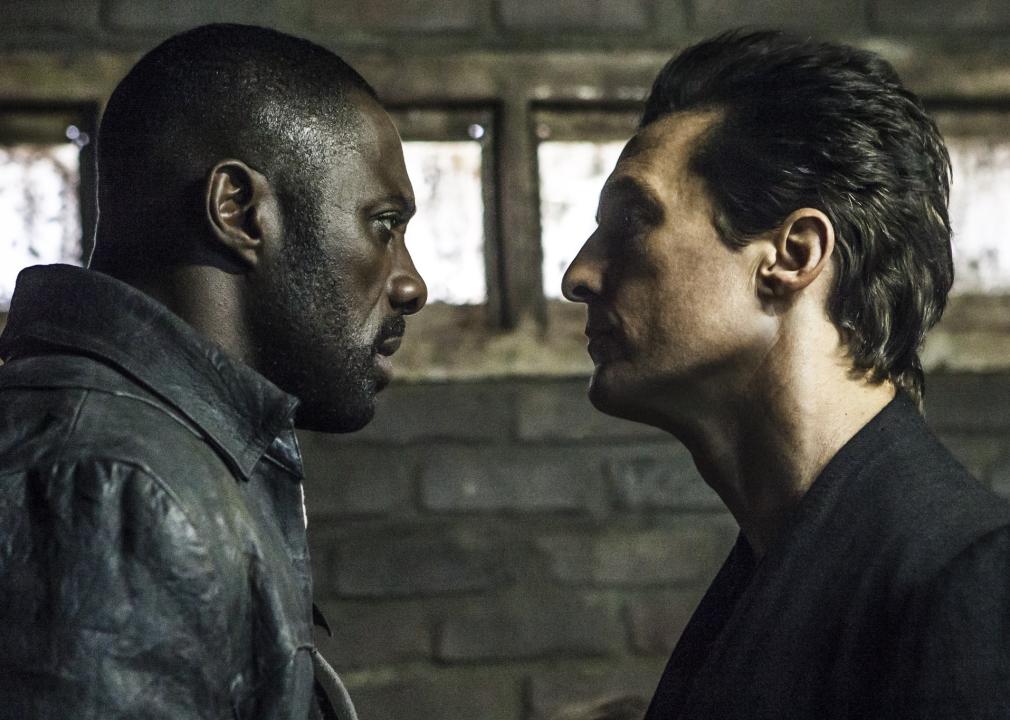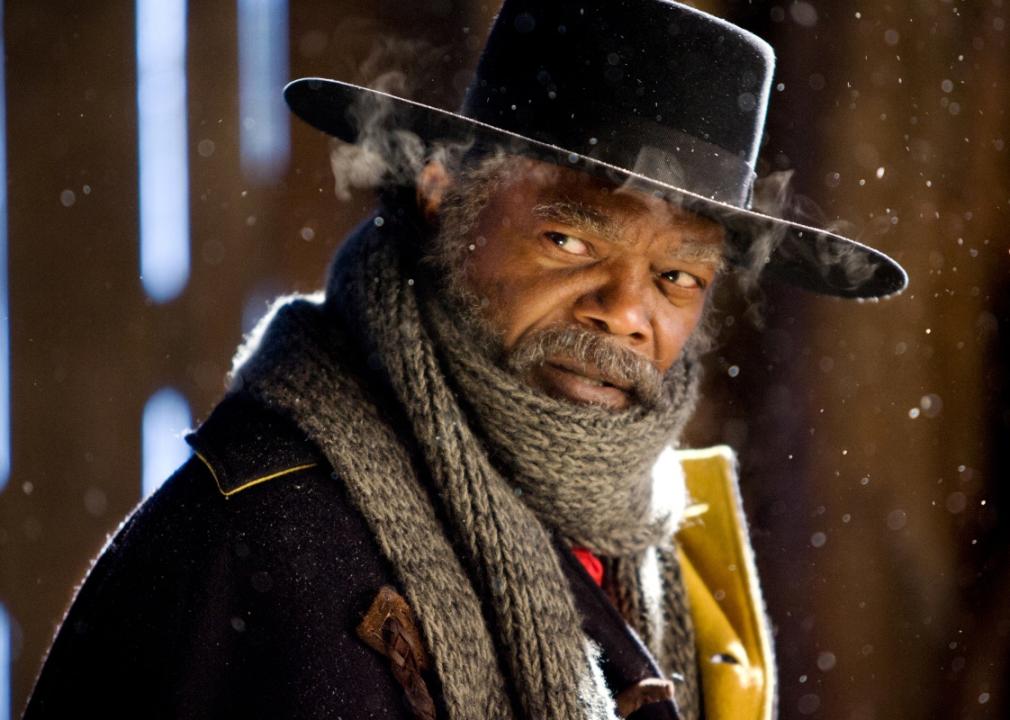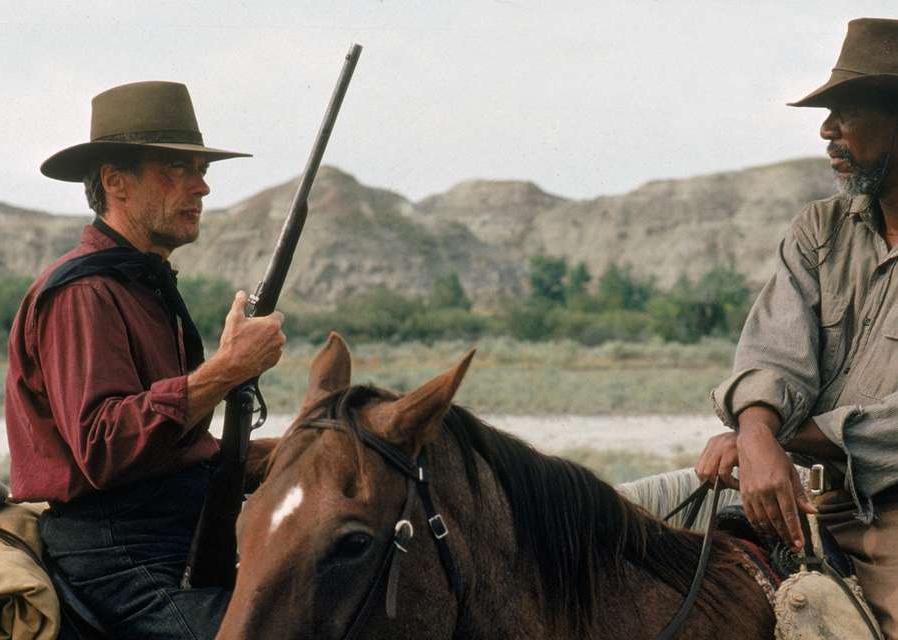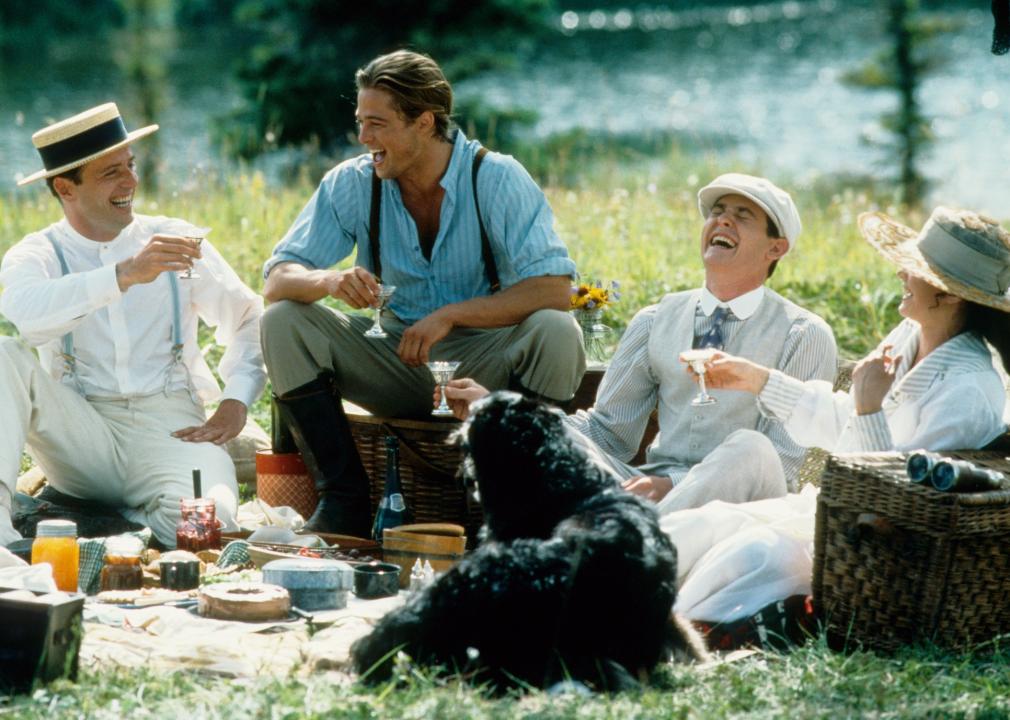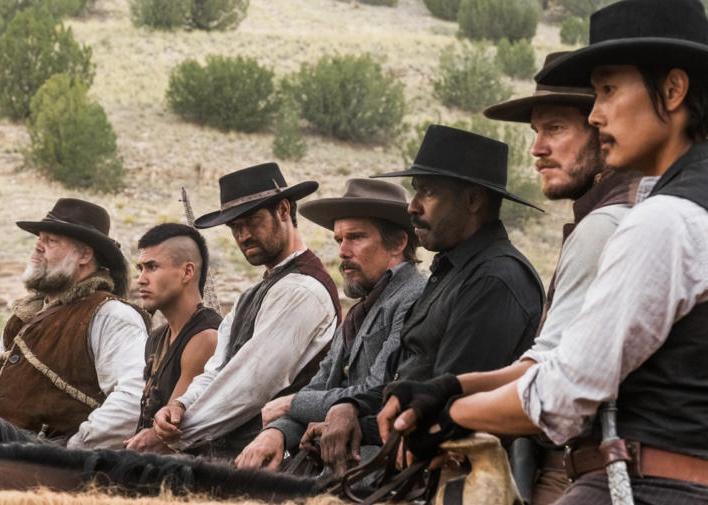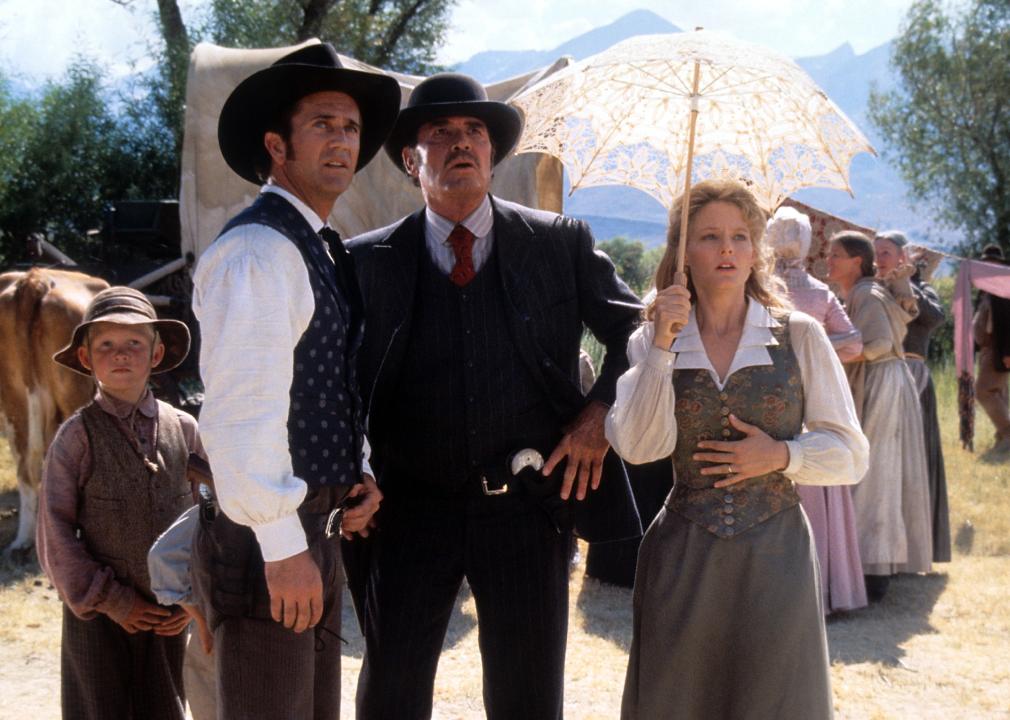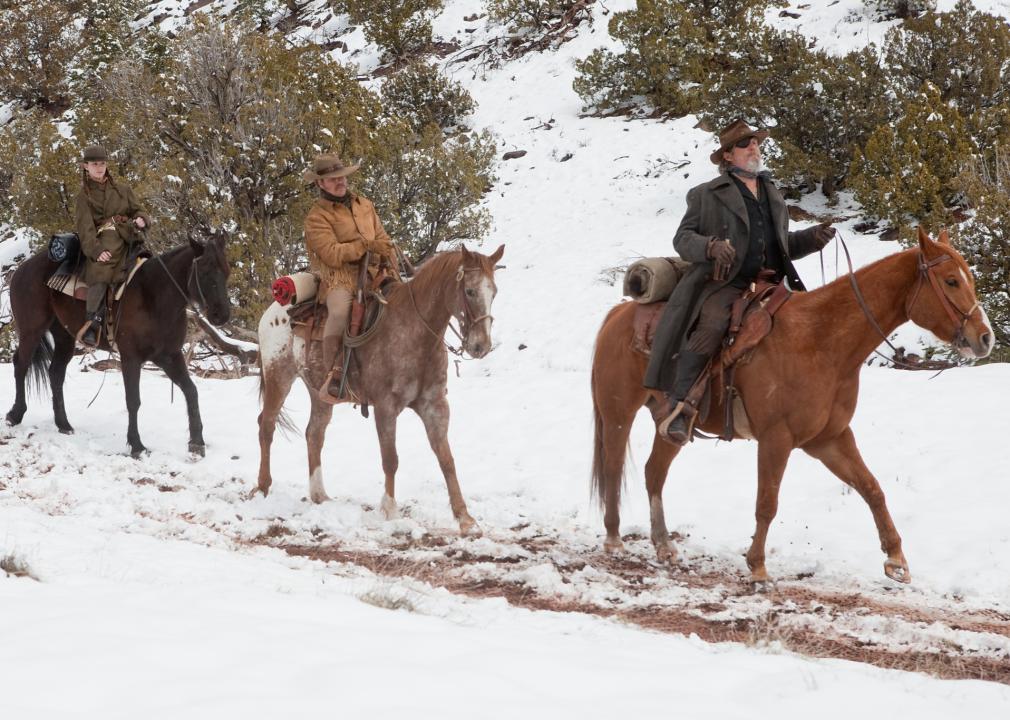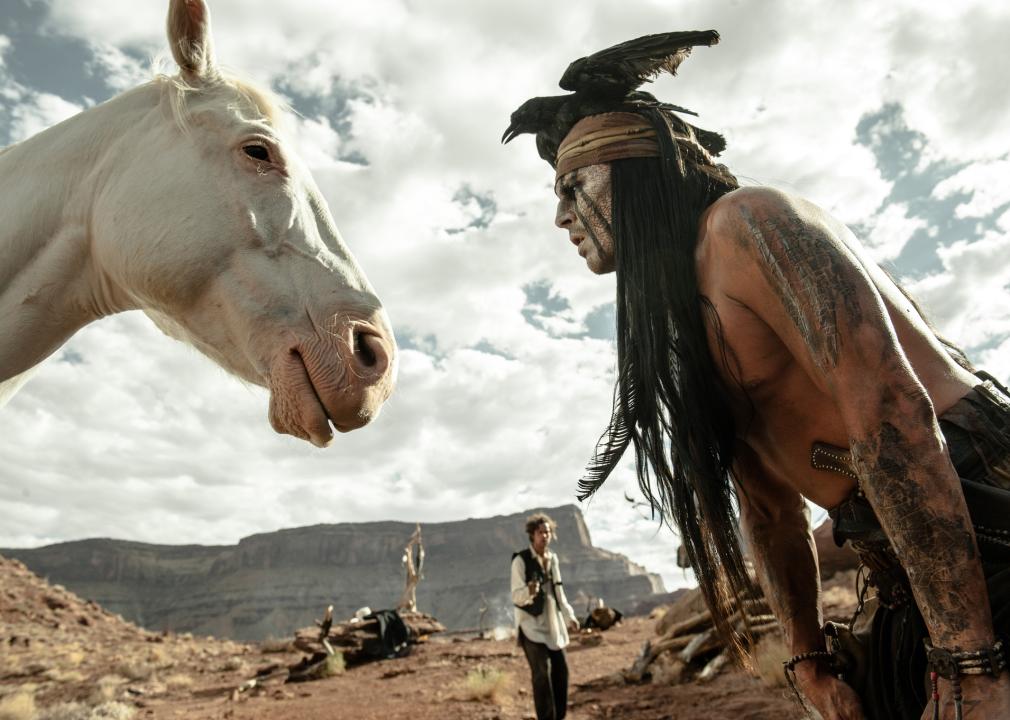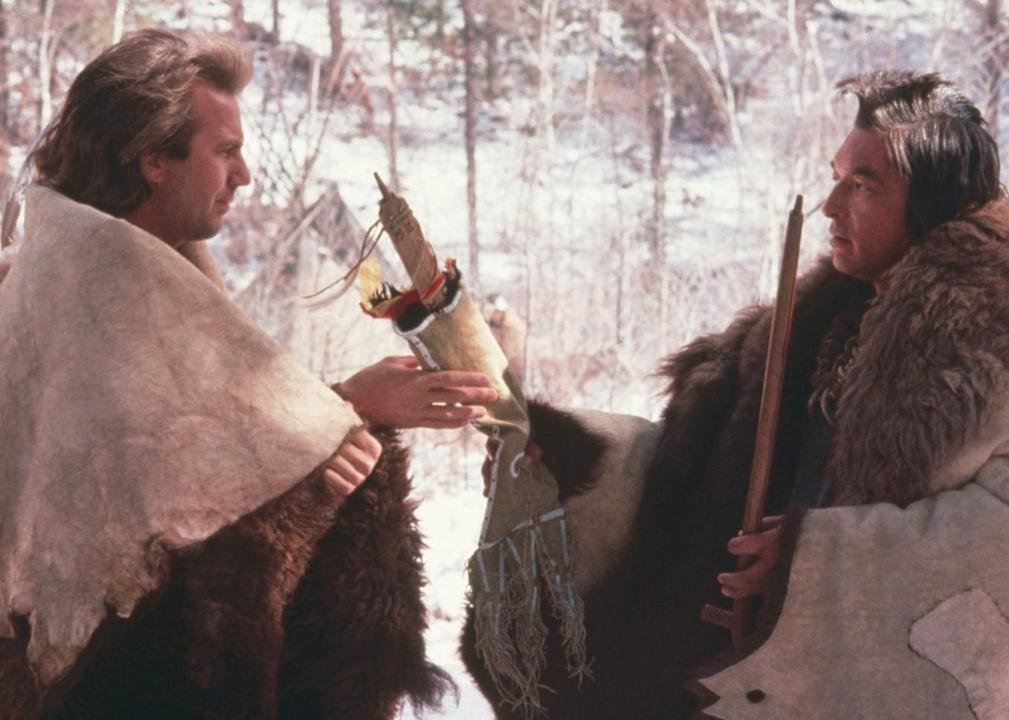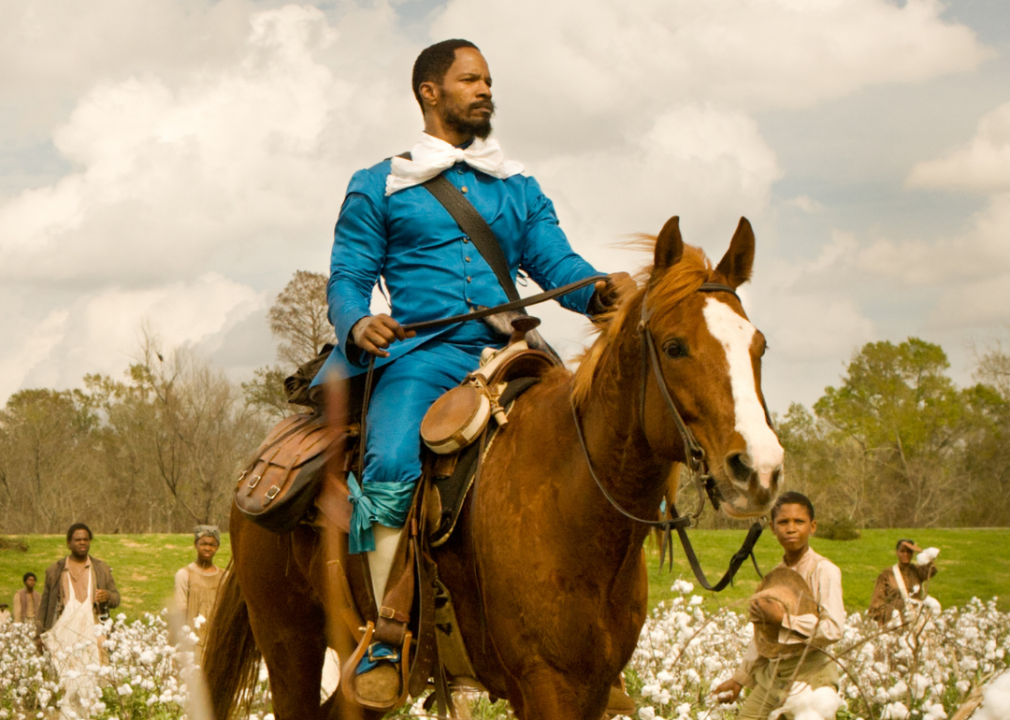Westerns that made the most money at the box office
Walt Disney Pictures
Westerns that made the most money at the box office
The Old West. Modern society’s image of what the American frontier in the 1800s was truly like is as much derived from movie-making as from written accounts of that time and sepia-toned photographs in which people tend to look markedly uncomfortable (due to the fact that people had to hold perfectly still for long periods of time in order for the picture not to come out blurred by movement). Westerns have their roots in the silent film era, where the myth of the cowboy and the code of the Wild West were well-suited to the medium—brusque, rough, violent, saying little, letting action speak for itself.
As the 20th century evolved, so did film and audiences’ appetites for spectacle. Once the silent era was over, the Western’s popularity continued, in large part because it was a type of film that could be made on a shoestring budget and allowed for the recycling of sets, and even story points from film to film. Thus every movie studio, from giants like Universal to smaller upstart studios like Fox Film Corp. and Republic Pictures, was in the business of bringing the Wild West to life. From the 1920s through the 1960s, Westerns were among the most successful films in the U.S. Stars like Tom Mix and Buck Jones ruled the black and white era, until in 1939, legendary director John Ford’s “Stagecoach” introduced the world to Marion “Duke” Morrison, more widely known as John Wayne. Wayne had by that time been in dozens of films that made little impact, but “Stagecoach” set a new standard for what a Western could be.
In the decades that followed, the Western has retained its air of grandeur and its role in American mythopoetics as a lens on a distant past, even as the form and function of the Western has evolved along with changing social mores and trends toward grittier, more realistically violent stories. The popularity of Westerns has weathered ebbs and flows at the box office, still producing its legends such as Clint Eastwood, and to this day these films are still being produced and finding their audience.
Stacker looked into box office data at The Numbers and ranked the top 50 highest-grossing Westerns by worldwide box office gross. Domestic box office is provided for context. While earnings are not the only measure of the success of a Western, they are indicative of the worldwide reach this genre has and the distinctly American stamp they have put on film history.
You may also like: Movie Trivia for the Top 100 Films of all Time
![]()
Columbia Pictures
#50. Geronimo: An American Legend (1993)
– Worldwide box office: $18,296,646
– Domestic box office: $18,296,646
Director Walter Hill brought his 1980s action movie cache to this star-studded epic based on the Apache chief’s armed resistance to the U.S. government occupation of his people’s land. Wes Studi, himself a native Cherokee, stars as the title character, supported by a cast that included Gene Hackman (who, no stranger to the genre, appears elsewhere on this list, as well), Jason Patric, and in an early performance, Matt Damon. Roger Ebert called it “a film of great beauty and considerable intelligence.”
TriStar Pictures
#49. The Quick and the Dead (1995)
– Worldwide box office: $18,552,460
– Domestic box office: $18,552,460
Before he made the A-List of Hollywood directors with the “Spider-Man” movies, Sam Raimi took a break from his signature “Evil Dead” horror series to make this unusual tale of revenge and retribution. The film marks the audience’s first look at future Oscar winner Russell Crowe in a mainstream film; he plays a former gunslinger turned priest who is forced (by fellow Oscar winner Gene Hackman) to participate in a shoot-out tournament alongside lead Sharon Stone and yet another future Oscar winner, Leonardo DiCaprio.
Mavericks Inc.
#48. Across the Great Divide (1976)
– Worldwide box office: $18,800,000
– Domestic box office: $18,800,000
This story of two orphans who brave the treacherous Rocky Mountains to claim a 400-acre plot in Oregon was directed by family film veteran Stewart Raffill (“The Adventures of the Wilderness Family”; “Mac and Me”). The New York Times called it an “innocents-versus-the-wilds confection.” Star Heather Rattray would go on to appear in Raffill’s “The Sea Gypsies” the following year.
EuropaCorp
#47. Bandidas (2006)
– Worldwide box office: $19,282,590
– Domestic box office: data not available
Salma Hayek and Penelope Cruz play a duo of sharp, sexy bank robbers in this action-comedy. The film was co-directed by Joachim Rønning and Espen Sandberg, who would go onto international success with Academy Award-nominated “Kon-Tiki” and the fifth film in the Pirates of the Caribbean film series, “Dead Men Tell No Tales.”
PolyGram Filmed Entertaiment
#46. Posse (1993)
– Worldwide box office: $19,290,000
– Domestic box office: $18,290,000
Director Mario Van Peebles brought a distinctly modern visual style to this story of a band of Buffalo Soldiers who purloin a cache of gold in 1890s Cuba and return to America only to face the KKK and lawmen seeking their capture. The film didn’t do so well with critics, though The New Yorker applauded its “ferocious vigor and unsparing brutality.”
You may also like: Best Robert De Niro movies
Pax Enterprises
#45. The Professionals (1966)
– Worldwide box office: $19,537,346
– Domestic box office: $19,537,346
Directed by Richard Brooks of “Cat on a Hot Tin Roof” fame, this story follows four men hired by a wealthy rancher to rescue his wife from the clutches of a revolutionary leader turned bandit. Burt Lancaster, Robert Ryan, Lee Marvin, and Woody Strode play the rescuers, while future Oscar winner Jack Palance plays the heavy. The film received three Oscar nominations, including two for Brooks for writing and directing.
Paramount Pictures
#44. Shane (1953)
– Worldwide box office: $20,000,000
– Domestic box office: $20,000,000
This story of an enigmatic gunslinger who looks for a peaceful life in the Wyoming Territory was the most expensive Western made as of 1953, with a production cost of $3.1 million. Director George Stevens reportedly wanted Montgomery Clift for the role of Shane, but when he proved unavailable, the part became a vehicle for Alan Ladd, whose star was waning at that time. On the strength of this film, Ladd would be named one of the top ten stars of 1953, right behind the Duke himself. “Shane” sits at #3 on the American Film Institute’s list of the best Westerns of all time.
Selznick International Pictures
#43. Duel in the Sun (1946)
– Worldwide box office: $20,400,000
– Domestic box office: $20,400,000
Directed by legendary King Vidor and starring Gregory Peck, “Duel in the Sun” is the story of a young woman, played by Jennifer Jones, who after the death of her father goes to live with relatives in Texas only to find herself the target of a cruel ranch owner and subject to the advances of his son (Peck). The film’s score was by Dimitri Tiomkin, who would go on to win Oscars for scoring the Gary Cooper Western “High Noon” and the WWII drama “The High and the Mighty,” with John Wayne. (Fun Fact: Wayne liked Toimkin’s work so much he hired him to score his own directorial debut, “The Alamo,” in 1960.)
Cambridge Productions
#42. The Man From Snowy River (1982)
– Worldwide box office: $20,659,423
– Domestic box office: $20,659,423
This film has Tom Burlinson going to work for horse rancher Kirk Douglas in 1880s Australia, and eventually winning the love of Douglas’ daughter, played by Sigrid Thornton. The film was shot on location in Victoria, Australia. Director George T. Miller was normally a staple of TV and mini-series work, but did direct several other films including modest family comedy hit “Andre.”
Pathé Entertainment
#41. Quigley Down Under (1990)
– Worldwide box office: $21,413,105
– Domestic box office: $21,413,105
In a classic betrayal and revenge plot, Quigley (Tom Selleck) plays a Wyoming sharpshooter who is lured to Australia by a crooked rancher who tries to manipulate him into targeting aboriginal people, then tries to murder him for refusing. After escaping into the woods, Quigley teams up with the aborigines to take the rancher down. Director Simon Wincer, who was already known for the “Lonesome Dove” TV series, would go on to further success in the Western genre as director of its sequel series, “Comanche Moon.”
You may also like: Best Picture Winner From the Year You were Born
Touchstone Pictures
#40. The Alamo (2004)
– Worldwide box office: $23,911,362
– Domestic box office: $22,406,362
Though John Wayne told this cinematic story first, back in 1960, this reimagining of the siege of the Alamo went further than that classic by including not just the siege itself but the subsequent fight for Texan independence. In this version, Denis Quaid plays Col. Sam Houston alongside Billy Bob Thronton’s Davy Crockett and Jason Patric’s Jim Bowie. Following the shootout at the Alamo, where less than 200 Texans held off 2,000 Mexican troops for 13 days before being overrun, Houston’s army defeated Mexico’s dictator Santa Ana to achieve independence in 1836 at the battle of San Jacinto. Despite its relative box office draw, “The Alamo” was considered a flop, as it cost a reported $140 million to produce and market. Five years later, director John Lee Hancock would see Sandra Bullock to an Oscar in “The Blind Side.”
Warner Bros.
#39. Wyatt Earp (1994)
– Worldwide box office: $25,052,000
– Domestic box office: $25,052,000
This take on legendary lawman Wyatt Earp certainly reached for epic proportions. Clocking in at over three hours, the film follows Earp (Kevin Costner) from his youth up through his days as a buffalo hunter and lawman in Wichita and Dodge City, Kansas, and finally to the infamous Gunfight at the O.K. Corral and the subsequent Vendetta Ride against the gang of cowboys who murdered Earp’s brother. Director Lawrence Kasdan—of “Big Chill” and “Empire Strikes Back” fame—had previously directed Costner in the 1985 Western “Silverado.”
Columbia Pictures
#38. Desperado (1995)
– Worldwide box office: $25,532,388
– Domestic box office: $25,532,388
The film that brought director Robert Rodriguez international acclaim, “Desperado” is the second in what is known as the “Mexican Trilogy.” The movie follows Mariachi (Antonio Banderas) as he hunts down a Mexican drug lord and his band of desperadoes. Off-screen, Rodriguez formed a bond with fellow director Quentin Tarantino that would lead to their collaboration on the vampire flick, “From Dusk Till Dawn” in 1996. Banderas would return eight years after “Desperado” to close out the trilogy in “Once Upon a Time in Mexico.”
Warner Bros.
#37. The Outlaw Josey Wales (1976)
– Worldwide box office: $27,000,000
– Domestic box office: $27,000,000
This film’s iconic poster almost says it all. Clint Eastwood plays Wales, a Missouri farmer whose family is slaughtered by a Union army officer in the waning days of the Civil War. After joining a ragtag band of confederate guerillas, Wales becomes, as the poster says, “an army of one,” contending with bounty hunters out to collect the price on his head and the Union Militia looking to put him behind bars. The film is based on a novel by Forrest Carter, who it turns out was actually segregationist Asa Earl Carter, founder of a splinter group of the Ku Klux Klan. Carter inadvertently outed himself after being interviewed on TV by Barbara Walters.
New Line Cinema
#36. Appaloosa (2008)
– Worldwide box office: $27,911,453
– Domestic box office: $20,211,394
Helmed by screen legend Ed Harris (“Apollo 13,” “The Truman Show”), this movie, based on the Robert B. Parker novel of the same name, follows Harris and Viggo Mortensen as a pair of itinerant lawmen who come to the town of Appaloosa to arrest a murderous rancher, played by Jeremy Irons, and in the process find themselves compromised by the arrival of a young widow (Renee Zellweger). This marked the second time Harris went behind the camera for a film he also starred in—the first was 2000’s “Pollock,” based on the life of artist Jackson Pollock.
You may also like: Steven Spielberg films ranked from worst to first
American Zoetrope
#35. The Beguiled (2017)
– Worldwide box office: $28,039,038
– Domestic box office: $10,576,669
Based on the film’s poster and marketing, one might be forgiven for not realizing this is a Western. Director Sofia Coppola was more well known for quiet, off-key dramedies like “Lost in Translation” and “Marie Antoinette” when this film debuted at the 2017 Cannes Film Festival. It is the story of a wounded Civil War soldier (Colin Farrell) who is taken in by the residents of a women’s seminary. While recuperating from his injuries, his presence inspires a sexual awakening among some of the young women that leads to conflict and forbidden desire. Coppola took Best Director at Cannes for this film, the first time in 50 years the award went to a woman; the last was Yulia Solntseva in 1961.
George Stevens Productions
#34. Giant (1956)
– Worldwide box office: $30,195,333
– Domestic box office: $30,178,619
Based on Edna Ferber’s classic novel and featuring the last performance of screen legend James Dean, who died in a car crash in September 1955, “Giant” is a film in the epic tradition, following the fortunes, loves, and losses of a trio of people (Dean, Rock Hudson, and Elizabeth Taylor) on a Texas cattle ranch. George Stevens took the Oscar for Best Director, while Dean, Hudson, and supporting actress Mercedes McCambridge were all nominated.
Cinema Center Films
#33. Little Big Man (1970)
– Worldwide box office: $31,559,552
– Domestic box office: $31,559,552
This Dustin Hoffman vehicle is based on Thomas Berger’s novel of the same name. It is the story of Jack Crabb, who looks back from the vantage of age 121 over the course of his life, highlighting events such as fighting alongside General Custer at Little Bighorn and being kidnapped and raised by Indians. The film was released to near-universal acclaim, which was nothing new to director Arthur Penn; just three years earlier he was likewise heralded for his treatment of “Bonnie and Clyde.”
Walt Disney Productions
#32. The Apple Dumpling Gang (1975)
– Worldwide box office: $31,916,500
– Domestic box office: $31,916,500
This Walt Disney production employed slapstick and silliness at a time when a gritty school of filmmaking was en vogue. A trio of orphans are sent to live with a gambler (Bill Bixby) and discover they have inherited a large fortune from their dead father. After a series of ne’er-do-wells try to get their hands on the gold, the kids decide to give their inheritance to a pair of less-than-successful outlaws (Tim Conway and Don Knotts). The duo then try to steal the gold from the bank vault where it is being held. The film was so successful with families that it spawned a sequel four years later.
Columbia Pictures
#31. Silverado (1985)
– Worldwide box office: $33,200,000
– Domestic box office: $33,200,000
An all-star cast leads this Lawrence Kasdan-helmed Western. Scott Glenn, Danny Glover, and Kevins Costner and Kline band together to rescue the town of Silverado from the ruthless oppression of a greedy rancher and a corrupt sheriff. A critical success, the movie helped launch Costner in particular, who over the next five years would make box office hits “The Untouchables,” “Field of Dreams,” and Oscar winner “Dances with Wolves.”
You may also like: 100 best John Wayne movies
Grisbi Productions, Le
#30. Hostiles (2017)
– Worldwide box office: $36,976,336
– Domestic box office: $29,819,114
After directing Jeff Bridges to an Oscar in 2009’s Western-tinged “Crazy Heart,” director Scott Cooper returned to the West for this tale of a U.S. cavalry captain (Christian Bale) who is ordered to escort a Cheyenne chief—his sworn enemy—and his family through dangerous territory to their ancestral home in Montana’s Valley of the Bears. The film co-stars renowned Native American actor Wes Studi.
CBS Films
#29. Hell or High Water (2016)
– Worldwide box office: $37,584,304
– Domestic box office: $27,007,844
British director David Mackenzie had a slew of films in his oeuvre before he made this breakout success in 2016. The story follows an unemployed oil worker (Chris Pine) who teams up with his recently paroled jailbird brother (Ben Foster) to knock over a series of agencies of the Texas Midlands Bank in an effort to gather enough cash for Pine’s character to leave his ranch to his estranged sons. An interesting fact that lends itself to the film’s high intensity is that Chris Pine was shooting the sci-fi actioner “Star Trek Beyond” at the same time and was thus only available for two and a half weeks, meaning all his scenes were shot rapidly and in order.
Wallis-Hazen
#28. True Grit (1969)
– Worldwide box office: $37,659,900
– Domestic box office: $31,132,592
John Wayne’s place in posterity as America’s most legendary on-screen cowboy was assured when “True Grit” dropped the cherry on top of his varied and distinguished career, earning him his only Oscar for Best Actor. Wayne plays Reuben “Rooster” Cogburn, a cantankerous but deeply experienced U.S. Marshall who, along with Glen Campbell’s Texas Ranger, aids a young woman (Kim Darby) through Indian territory to exact revenge on the man who murdered her father. Wayne would come back to the role of Cogburn six years later, this time opposite Katharine Hepburn’s turn as a missionary in “Rooster Cogburn (… and the Lady).”
Revolution Studios
#27. The Missing (2003)
– Worldwide box office: $38,253,433
– Domestic box office: $26,900,336
This tale of an estranged father and daughter takes place in 1880s New Mexico. Tommy Lee Jones and Cate Blanchett play the familial pair, who form an uneasy alliance when Blanchett’s daughter is kidnapped by Apaches and go out in search of her. “The Missing” was director Ron Howard’s followup to the Oscar-winning “A Beautiful Mind.” The film used authentic Apache dialect, of which Howard said, “I wasn’t looking to merely exercise an old genre, but rather to tell a story that was relatable on a human level and exciting and suspenseful—but that still treated the period in an authentic way.”
The Malpaso Company
#26. Pale Rider (1985)
– Worldwide box office: $41,410,568
– Domestic box office: $41,410,568
Clint Eastwood directed and starred in this story of a preacher who tries to persuade a local landowner to give up his attempts to overtake a gold mining operation. With a tagline like “… and hell followed with him,” you can guess it ends none too peacefully. This marked the first Western Eastwood made since 1976’s “The Outlaw Josey Wales.” He would not make another until 1992—but you’ll need to make your way down the list a little further to learn about that one.
You may also like: 100 best Westerns of all time
Castle Rock Entertainment
#25. City Slickers II: The Legend of Curly’s Gold (1994)
– Worldwide box office: $43,440,947
– Domestic box office: $43,440,947
The last person you might think would be up for making a Western would be comedian Billy Crystal, known for more urban comedies like “When Harry Met Sally” and “Running Scared.” But he made not one but two – the second being a sequel to 1991’s “City Slickers.” Crystal, along with co-stars Jon Lovitz and Daniel Stern play three city dwellers who head out to the lone prairie, this time not for some R&R, but to chase down treasure promised by a secret map left in their hands after the death of cowboy guide Curly (Jack Palance). Even though the character of Curly is dead, Palance returned to his Oscar-winning role for the film. (Fun fact: Palance was nominated back in 1953 for another Western, the classic “Shane.”)
Morgan Creek Entertainment
#24. Young Guns II (1990)
– Worldwide box office: $44,143,410
– Domestic box office: $44,143,410
After the success of the first “Young Guns,” original stars Emilio Estevez, Kiefer Sutherland, and Lou Diamond Phillips returned two years later for this sequel, which traces Billy the Kid’s attempts to outrun Sheriff Pat Garrett. The film’s narrative frame uses the real-life claim of “Brushy” Bill Roberts in the 1940s that he was, in fact, Billy the Kid, and was not killed by Garrett in 1881. Roberts’ claim was discounted, despite several surviving friends of the outlaw identifying him. Singer Jon Bon Jovi wrote and sang the film’s entire soundtrack and even has a bit part as a jailbreaking felon who meets an ugly demise.
Morgan Creek Entertainment
#23. Young Guns (1988)
– Worldwide box office: $44,726,644
– Domestic box office: $44,726,644
In 1988, the Brat Pack met the Wild West. Loaded with some of the brightest young stars of the 1980s, “Young Guns” tells a fictional variation of the origin story behind how William H. Bonney became outlaw Billy the Kid. Estevez plays the Kid; real-life brother Charlie Sheen plays the leader of the outlaw crew called the Regulators. The film culminates in the Lincoln County War, in which the Kid’s crew took on a passel of Irish landowners as well as the U.S. Army. The film takes several liberties with historical fact, among them that John Tunstall (Terence Stamp), a benevolent personage in Bonney’s life who helped him find work on his ranch, was an older gentleman—in reality he was about 24 years old when Billy knew him.
Sun International
#22. The Life and Times of Grizzly Adams (1974)
– Worldwide box office: $45,411,063
– Domestic box office: $45,411,063
Wrongly accused of murder, woodsman Grizzly Adams (Dan Haggerty) takes refuge in the wilderness where he learns to survive and “adopts” an orphaned bear cub, which he names Ben. This mid-70s nod to exile and redemption may sound silly and bleak in equal measure, but it’s actually a G-rated family film that spawned an entire career for star Haggerty, who would go on to play Adams in a TV series based on the film in the late 70s, as well as further films including “The Capture of Grizzly Adams” and “Grizzly Mountain.” Director Richard Friedenberg would go on to great success as the screenwriter of “A River Runs Through It.”
MGM
#21. How the West Was Won (1963)
– Worldwide box office: $46,500,000
– Domestic box office: $46,500,000
It would be quicker to list who wasn’t involved in this Western extravaganza than those who were. Arranged in five “chapters,” this film had three directors: John Ford, George Marshall, and Henry Hathaway (who directed three of the five). The story follows the tribulations and triumphs of a family from the 1830s to the 1880s, touching on the Civil War and Indian conflicts, as well as romance and conflicts with highwaymen. The cast is so big the film poster couldn’t even contain it all, but the brightest stars include James Stewart, John Wayne, Henry Fonda, and Gregory Peck, as well as Spencer Tracy, who provides voiceover narration to hold all five chapters together.
You may also like: 50 of the best films according to women critics
Paramount Pictures
#20. Urban Cowboy (1980)
– Worldwide box office: $46,918,287
– Domestic box office: $46,918,287
After the zeitgeist-setting “Saturday Night Fever,” John Travolta could pretty much do anything, and he chose to go off-type in this drama about a young, naive man who learns about love the hard way, largely in a Houston nightclub. Debra Winger co-stars as Sissy, the object of Travolta’s love and frustration. Mechanical bull riding and—of course, since this is a Travolta pic—dancing provide the film’s narrative thrust, which also manages to throw in a robbery subplot, too. The film’s soundtrack is credited with taking country music mainstream at a time when disco ruled the airwaves.
Hollywood Pictures
#19. Tombstone (1993)
– Worldwide box office: $56,505,065
– Domestic box office: $56,505,065
“I’m your huckleberry.” So says Val Kilmer’s Doc Holliday as he steps up to villain Johnny Ringo (Michael Biehn) in a quiet clearing, and both a quick, deadly gunfight and a classic quip were born. Arriving on screens less than a year before Kevin Costner’s take on the life of Wyatt Earp, this movie focuses on Earp’s time in the town of Tombstone, Arizona, long after his days as a lawman were over. Together with his brothers, Earp (Kurt Russell) attempts to build a business for himself, falls in love with a singer (Dana Delaney), and finds himself in the crosshairs of a deadly band of outlaws set on running a crime ring no matter the cost. Kilmer later employed his famous line as the title of a memoir, in which he describes what it was like to shoot the film, as well as his struggles with cancer. He was also open about the film’s behind-the-scenes troubles: After first director Kevin Jaffe was fired, Kilmer said star Russell “[drew] up shot lists to help our replacement director, George Cosmatos, who came in with only two days prep.”
Touchstone Pictures
#18. Open Range (2003)
– Worldwide box office: $68,613,992
– Domestic box office: $58,331,254
Director Kevin Costner’s affection for the Wild West rode on in this tale of a reformed gunslinger (Robert Duvall) who finds himself reluctantly drawn into a conflict with a landowner (Michael Gambon of “Harry Potter” fame) who wants to drive Duvall and his cattle crew (led by Costner) out of the territory. Annette Bening plays a local woman who offers the crew kind assistance after a midnight ambush leaves them wounded. The film was a critical and commercial success, with Roger Ebert calling it a “deeply involving and beautifully made Western.”
Lionsgate
#17. 3:10 to Yuma (2007)
– Worldwide box office: $71,171,825
– Domestic box office: $53,606,916
Based on a short story by Elmore Leonard, this film pits Russell Crowe’s criminal against Christian Bale’s rancher in a battle of wills. Dan Evans (Bale) is an impoverished rancher whose son William fancies himself a gunfighter. When Evans is asked to help escort Ben Wade (Crowe) to the 3:10 train to Yuma, he sees an opportunity to earn enough cash to save his ranch and in the process earn the respect of his son. But attacks by Indians and Wade’s own outlaw crew make it a perilous enterprise, as do Wade’s persistent attempts to undermine the entire operation. This story was brought to the silver screen once before, in 1957 with Glenn Ford and Van Heflin playing the leads.
Touchstone Pictures
#16. Shanghai Noon (2000)
– Worldwide box office: $71,189,835
– Domestic box office: $56,932,305
After the international success of 1995’s “Rumble in the Bronx,” martial arts star Jackie Chan was a hot ticket at the box office. This film sets him as an Imperial Chinese Guard who is tasked by the emperor with journeying to the new world in search of a kidnapped princess. There, he partners with a thief with cowboy aspirations (Owen Wilson), and the unlikely pair stumble from one misadventure to another (with a ton of jokes and fighting in between). Chan and Wilson would go on to co-star in the (even more profitable) sequel “Shanghai Knights” and “Around the World in 80 Days.”
You may also like: The best streaming services in 2021
Bluegrass Films
#15. A Million Ways to Die in the West (2014)
– Worldwide box office: $86,778,557
– Domestic box office: $42,720,965
“The American West is a disgusting, awful, dirty, dangerous place.” This modern revisionist comedic look at the myth of the Old West pulls no punches in lampooning everything that traditional Westerns rely on for their mystique and longevity. When your bad guy is named ‘Clinch Leatherwood’, there’s really no traditional trope safe from sendup. Written and directed by comedian Seth MacFarlane, this story of a poor sheep farmer who gets dumped by his snooty girlfriend, runs afoul of a local killer, and is generally a coward in every way imaginable may not have hit the critics’ sweet spot, but it scored a relative bullseye with audiences.
Touchstone Pictures
#14. Shanghai Knights (2003)
– Worldwide box office: $88,316,835
– Domestic box office: $60,470,220
Jackie Chan and Owen Wilson return in this sequel to “Shanghai Noon.” This time the pair are on the road to revenge after a Chinese rebel murders Chon’s (Chan) father. The adventure leads to London, where they encounter Chon’s sister (Fann Wong) with similar aspirations of vengeance, and together the trio uncover a plot to eliminate England’s Royal Family. Director David Dobkin has since gone on to success as a producer of TV hits such as “Into the Badlands” and “Sugar,” as well as directing “Wedding Crashers,” also featuring Owen Wilson.
Eaves Movie Ranch
#13. Billy Jack (1971)
– Worldwide box office: $98,000,000
– Domestic box office: $98,000,000
The anti-establishment vibe of the late 1960s runs deep in this tale of a half-Indian/half-white ex-Green Beret—who is, incidentally, also an expert in hapkido—who gets involved in the protection of a local free arts “school” in the western desert against the oppression of local townsfolk—and also manages to protect wild horses from being slaughtered for dog food. Written, directed, and starring Tom Laughlin, “Billy Jack” attempted to capture the general mood of disaffected youth in the wake of the Vietnam War protests, as well as the ire against the U.S. government’s treatment of Native peoples, and in the process created something of a counterculture icon.
Campanile Productions
#12. Butch Cassidy and the Sundance Kid (1969)
– Worldwide box office: $102,310,711
– Domestic box office: $102,308,900
Featuring one of the most famous and stirring endings in cinema history, this loosely fact-based story follows outlaws Robert LeRoy Parker, aka Butch Cassidy (Paul Newman), and Harry Longabaugh, aka The Sundance Kid (Robert Redford) in early 1900s Wyoming. A botched train heist sends the pair on the run—all the way to Bolivia. The film was an Oscar winner four times over, though not in any of the “top” categories. Director George Roy Hill would soon get his, however, in another Redford/Newman romp, 1973’s “The Sting.” Newman later founded a camp for children, naming it in homage to his experience on this film.
Touchstone Pictures
#11. Hidalgo (2004)
– Worldwide box office: $108,086,731
– Domestic box office: $67,286,731
This biopic from director Joe Johnston (“Jumanji,” “Captain America: The First Avenger”) tells the story of Frank Hopkins (Viggo Mortensen), a former U.S. Cavalry scout who works as a stunt rider for Buffalo Bill’s Wild West Show. When an Arab sheikh challenges Hopkins to prove the show’s claim that he is the world’s greatest endurance rider, he and his trusty mustang, Hidalgo, are off on an adventure to compete in the Ocean of Fire, a 3,000-mile survival race across the Arabian desert. The historic origins of the film’s narrative were called into question when little evidence could be found that Hopkins was ever part of the Buffalo Bill show. Of course, that didn’t stop audiences from coming out in droves.
You may also like: Can you answer these real ‘Jeopardy!’ questions about movies?
Columbia Pictures
#10. The Dark Tower (2017)
– Worldwide box office: $113,461,527
– Domestic box office: $50,701,325
It took several tries to bring this Stephen King novel to the big screen. In 2007, J.J. Abrams (of Star Wars and Star Trek fame) and Damon Lindelof (“Lost”) were prepped to adapt the book, but left the project out of fear of failure. Director Ron Howard was next to take a crack at it, planning not just a film but a TV series as well, but cost precluded the studio from committing. Finally, Sony Pictures got hold of the rights, and voila, this dark tale of the Gunslinger (Idris Elba) who protects a boy against The Man in Black (Matthew McConaughey), a warlock who wants to use the boy’s visionary powers to destroy the Dark Tower and unleash hell finally came to be. Alas, Stephen King himself was disappointed in the results, largely based on the movie’s PG-13 rating.
Visiona Romantica
#9. The Hateful Eight (2015)
– Worldwide box office: $152,366,784
– Domestic box office: $54,117,416
Director Quentin Tarantino has made a career out of taking his influences and filtering what might otherwise be pastiche into something entirely different. His first try at a Western follows a bounty hunter, played by Kurt Russell, on the road to delivering a prisoner (Jennifer Jason Leigh in an Oscar-nominated role) to custody, who holes up in a cabin in Wyoming amidst a storm, only to find he must share time (and a relatively small space) with a cadre of questionable individuals. Tarantino hired none other than Ennio Morricone, the composer behind the timeless score for Clint Eastwood’s “Dollars Trilogy,” to score the film, earning him the only Oscar he ever won.
Warner Bros.
#8. Unforgiven (1992)
– Worldwide box office: $159,157,447
– Domestic box office: $101,157,447
The traditional Western had lost some of its cache by the early 1990s, but the release of this film ushered in a renewal of interest in the genre. Clint Eastwood directs himself as a lonely former gunslinger named William Munny, who is mourning the death of his wife when he accepts one last job—to find and shoot down the men who disfigured a prostitute. After engaging an old partner (Morgan Freeman), Munny finds much more danger than anticipated when he goes up against Sheriff “Little Bill” Daggett (Gene Hackman in an Oscar-winning performance) whose sense of justice lies solely in whatever keeps him in control of the town of Big Whiskey. The American Film Institute ranked “Unforgiven” as #4 on its list of all-time great Westerns.
TriStar Pictures
#7. Legends of the Fall (1994)
– Worldwide box office: $160,502,573
– Domestic box office: $66,502,573
The international appeal of star Brad Pitt helped bring this story about three brothers (Pitt, Aidan Quinn, and Henry Thomas) whose lives are torn by World War I to a wider audience. Sir Anthony Hopkins plays the father, a former colonel now retired in the Montana wilderness. Director Edward Zwick was no stranger to epic tales of war, having directed 1989’s “Glory,” set during the Civil War. He would follow this film with “Courage Under Fire,” the plot of which revolves around Operation Desert Storm.
MGM
#6. The Magnificent Seven (2016)
– Worldwide box office: $162,122,642
– Domestic box office: $93,432,655
This remake of the 1960 Yul Brenner classic—itself a reimagining of Akira Kurosawa’s “Seven Samurai”—stars Denzel Washington, Ethan Hawke, and Chris Pratt in the story of seven disparate gunmen who band together to defend a town against a ruthless industrialist. This version is more than an update in terms of filmmaking technique; it also deftly introduced what modern society refers to as PTSD, which manifests in Hawke’s character, a Civil War veteran whose emotional scarring precludes him from being able to kill. Director Antoine Fuqua was, in fact, explicit that his version of this story intentionally reflected aspects of contemporary society, saying, “A Western movie [is] a good reflection of where things are in the world at that time. It’s probably one of the purest forms of cinema that really tells you where the world is.”
You may also like: Best Meryl Streep movies
Donner/Shuler-Donner Productions
#5. Maverick (1994)
– Worldwide box office: $183,015,237
– Domestic box office: $101,631,272
Director Richard Donner reunited with his “Lethal Weapon” star Mel Gibson for this adaptation of the 1950s and 60s television series. Bret Maverick (Gibson) is a professional card player and con artist who meets his match in the guise of a beautiful thief, played by Jodie Foster, as he attempts to swindle his way to enough cash to enter a high-stakes poker tournament. James Garner, who played Maverick in the original TV series, is along for the ride as a legendary lawman and compatriot of Maverick’s. The film was a smash with critics and audiences alike, topping the box office on its opening weekend.
Paramount Pictures
#4. True Grit (2010)
– Worldwide box office: $252,276,928
– Domestic box office: $171,243,005
Legend of the Duke notwithstanding, this version of Charles Portis’ classic novel of honor and determination quickly entered the echelon of top all-time Westerns. Jeff Bridges assumes the role of Rooster Cogburn, supported by Matt Damon as Texas Ranger LaBoeuf, and Hailee Steinfeld as the young girl who hires them to track down her father’s murderer (Josh Brolin). Directors Joel and Ethan Coen had all manner of difficulties in creating a gritty reality for the film, none of which betray themselves on screen. From proper horse training to making sure the language used was consistent and authentic to working within the boundaries imposed by having cast 13-year-old Steinfeld. “You know,” Ethan Coen told NPR, “we knew what we were getting into, shooting a movie with horses and a 13-year-old.”
Walt Disney Pictures
#3. The Lone Ranger (2013)
– Worldwide box office: $260,002,115
– Domestic box office: $89,302,115
Throughout most of the 1950s, “The Lone Ranger” was one of the most popular television shows in America, and even earlier than that it was a radio serial in the 1930s that inspired a generation of young boys during the Depression years. The show’s theme—the finale to Rossini’s “William Tell Overture”—to this day retains its connection to the show in pop culture. This modern reimagining stars Armie Hammer as the Lone Ranger and Johnny Depp as Tonto, a casting decision that resulted in some controversy within the Native American community when the film was released. The star, however, was adamant that his portrayal of the Comanche character was “no joke” and was, in fact, meant to be an earnest depiction of an honorable man. Critics and audiences were split on the film, though it managed to be one of 2013’s biggest draws.
Tig Productions
#2. Dances with Wolves (1990)
– Worldwide box office: $424,208,805
– Domestic box office: $184,208,842
Though it would eventually be one of the highest earning films of the year, “Dances with Wolves” was a slow burn with audiences, a scenario typical for a movie released during what is known as “awards season,” when limited screenings take place in advance of a wider release. This epic tale of a disillusioned lieutenant assigned to a remote Western outpost who befriends and eventually takes up arms to defend a Native American tribe stars Kevin Costner (who also directed the film and won an Oscar for it), Mary McDonnell, and Graham Greene (an Oneida Indian, who was born on the Six Nations Reserve in Canada). The film would be nominated for 12 Oscars, winning seven, including Best Picture of the Year. Michael Blake, whose novel the film is based on, took his inspiration for McDonnell’s character in part from the story of a young woman kidnapped by the Comanche in 1836 and eventually rescued by Texas Rangers in 1860. (This real-life occurrence would serve as the basis for another classic Western, John Ford’s “The Searchers.”)
The Weinstein Company
#1. Django Unchained (2012)
– Worldwide box office: $449,841,566
– Domestic box office: $162,805,434
A smash hit right out of the gate, this Quentin Tarantino-helmed film tells the story of a freed slave (Jamie Foxx) who partners with a bounty hunter (Christoph Waltz, in an Oscar-winning performance) to rescue his wife, who has become the “property” of a crooked plantation owner (Leonardo DiCaprio). The film does not shy away from its depiction of enslaved people—the plot of the film, in fact, hinges on the separation of Django and his wife at a slave auction, and Django’s freedom is only provided after he is “purchased” by Waltz’s King Schultz. The film was a hit with critics and audiences alike, and earned Tarantino his second Academy Award for screenwriting. The commitment of the film’s cast is well documented, among the more startling points is co-star Kerry Washington’s insistence on filming a graphic whipping scene herself without a stunt double, and DiCaprio’s having cut his hand pretty badly on a broken glass, the scene for which is the one you see in the film’s final cut.
You may also like: Worst Movies From the Last Decade, According to Critics
